Uttarakhand Birding tour
April 13rd to 23rd 2023 / 10 nights & 11 days
Number of person: 7 person only : Piyapong;Valla;Uthaiphan;Noppawan;Nantawan;Nakorn and Anupong
Local Guides ; Lakpa; Rahul
Accommodation
Sattal 2 nightManila 2 night
Chopta 3 night
Mandal 2 night
Sattal 1 night
ITINERARY
Day 1 - 13rd April- pickup from Dehli airport at 2.15 am and drive to Sattal 7-8 Hours. Late afternoon birding at sattal. over night sattal.
It is long drive to Sattal. We stop on the way for breakfast and some birding around the paddy field.
The first destination was at
Birders’s Den resort hotel @Sattal where has nice hide where we can spend our rest of the time photographing some birds. Rufous-chinned Laughingthrush, Red-billed Blue Magpie, Brown-fronted Woodpecker,
White-throated LaughingthrushPterorhinus albogularis
Red-billed Blue Magpie Urocissa erythroryncha
Raucous, vividly-colored magpie of lowland and foothill forests, gardens, and parks. Bright blue with black head, white belly, and long tail which trails loosely behind it in flight. Bright scarlet bill and extensive white crown serve to distinguish this species from the otherwise similar Yellow-billed Blue-Magpie. Travels in groups, communicating with constant, raucous, hoarse calls. Aggressive, often driving away other birds.[eBird]
Brown-fronted WoodpeckerDendrocoptes auriceps
A common mid-sized woodpecker of the Himalayas. Note brownish forehead, dark cheek stripe, distinctive black barring on white back, and white spots on black shoulders and wings. The yellow head is bordered by red feathers in the male and by black feathers in the female. Often moves in mixed flocks with other species through open woodlands, gardens, and forest edges. Calls include a sharp “pic” and various nasal, mewing sounds.[ eBird]
 |
| Male |
 |
| Female |
นกระวังไพรแก้มสีน้ำตาลRusty-cheeked Scimitar BabblerErythrogenys erythrogenys
A large brown babbler of scrubby edges, second growth, and open forest in hilly and montane regions. Seen in groups of up to a dozen during the non-breeding season, but pairs off in the spring and summer. Gray-brown from the crown down to the tail, ochre-colored on the face and flanks, and white on the throat, breast, and belly. Lacks any strong streaking or spotting. Like other scimitar-babblers, frequently duets, giving clear, gulping phrases, often with a liquid quality. Also gives harsh, aggressive chattering typical of the genus.[eBird]นกกะลิงเขียดสีเทา
Grey TreepieDendrocitta formosae
A long-tailed corvid found in lowland to submontane forests, parks, and gardens. Adults have black face, gray nape, brown back, pale belly, dark wings (with white patch visible in flight), orange undertail coverts, and long, black-tipped gray tail. Raucous, with a diverse repertoire; squawks and chatters loudly, but also whistles tunefully. Social, often in pairs or flocks, sometimes with other species. Forages primarily in trees, but also descends to the ground occasionally.[eBird]
Slaty-headed ParakeetPsittacula himalayana
Plum-headed ParakeetPsittacula cyanocephala
A brilliantly-colored parakeet; males have a plum-colored head while females have grayish-blue head. Endemic to the Indian subcontinent where it can occur in any well-wooded area outside NE India and the high Himalayas. Similar to the largely non-overlapping Blossom-headed Parakeet, but shows a darker shade of plum or gray on the head and a white-tipped tail (not yellow). They also lack the red shoulder patch seen on Blossom-headed females. A yellow upper bill separates it from all overlapping parakeets. Call is a distinctive, short, and high-pitched “tui.” [eBird]
 |
| Slaty-headed male vs. Plum-headed female |
Red-billed leiothrix
 นกไต่ไม้ท้องสีเม็ดมะขาม Chestnut-billed Nuthatch Sitta cinnamoventrisOften seen clambering up or headfirst down trees, this small active bird is usually found in the middle levels of the forest, though it will descend down toward the ground on occasion. Gray above and warmly-colored below throughout its range; eastern birds are paler below than western birds, the males of which have dark rusty bellies. Western birds also sport a bright contrasting white moustache. Lack of bright white patch on the tail distinguishes this species from White-tailed Nuthatch. A species of hill and submontane forests, where it favors lightly wooded areas of both broadleaf deciduous and pine forests. Often detected by its quick, echoing trill.[eBird]
นกไต่ไม้ท้องสีเม็ดมะขาม Chestnut-billed Nuthatch Sitta cinnamoventrisOften seen clambering up or headfirst down trees, this small active bird is usually found in the middle levels of the forest, though it will descend down toward the ground on occasion. Gray above and warmly-colored below throughout its range; eastern birds are paler below than western birds, the males of which have dark rusty bellies. Western birds also sport a bright contrasting white moustache. Lack of bright white patch on the tail distinguishes this species from White-tailed Nuthatch. A species of hill and submontane forests, where it favors lightly wooded areas of both broadleaf deciduous and pine forests. Often detected by its quick, echoing trill.[eBird]
Blue-winged MiniaActinodura cyanouroptera
A brightly colored bird of lowland and foothill forests. Usually travels in large groups, and is often a chief component of mixed-species feeding flocks. Adult is a powdery gray-blue overall with blue highlights on the wings and tail. The face and sides are tinged soft gray-brown. Varies considerably over range; birds in southern Southeast Asian portion of range are very gray, lacking bright colors. Sexes alike. Acrobatic, often hanging upside down on branches to probe for invertebrates and fruit hidden by foliage. Listen for its high-pitched paired whistles: “dwweeee-deeee.” [eBird]
Streaked LaughingthrushTrochalopteron lineatum
Orangey-brown laughingthrush with fine streaking all over the body. Breeds at middle to upper elevations, sometimes descending in the winter. Often found around human habitation; also in forest edge and scrubby or bushy areas. Forages on the ground in pairs or small flocks. Song highly variable, brief but often complex; first note often starts off with a distinct bubbling quality. Gives various high call notes. [eBird]
Grey-hooded WarblerPhylloscopus xanthoschistos
Green-backed TitParus monticolus
Himalayan Bulbul (White-cheeked Bulbul)Pycnonotus leucogenys
Sharp-looking bulbul with a spiffy mohawk. Note black face and throat, bright white cheek spot, and yellow vent. A species of foothill and montane forested areas; also found in brush, gardens, and towns. Tame and unafraid of people. 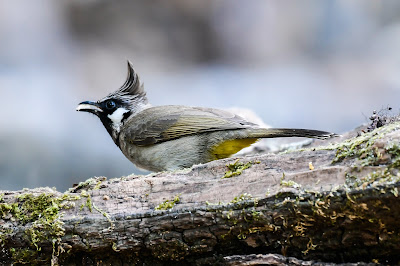 Typically in pairs or small flocks during the breeding season; congregates in large flocks at other times. Song is a short and rather nasal-sounding burst of gurgling warbles. Calls include dry raspings, chups, and squeaks.[eBird]
Typically in pairs or small flocks during the breeding season; congregates in large flocks at other times. Song is a short and rather nasal-sounding burst of gurgling warbles. Calls include dry raspings, chups, and squeaks.[eBird]
House Sparrow Passer domesticus

Widespread and abundant in cities, neighborhoods and farms. Avoids dense woods. Flocks cluster in dense bushes, bustling around and chattering to one another. Males have smart black bibs, bright rufous napes, and stunningly patterned wings with brilliant buffs and browns. Underparts are pale pearly-gray. Females are plain brown with cute face and lighter eyebrow. Native to Eurasia; introduced to much of the rest of the world.[eBird]
Blue Whistling-ThrushMyophonus caeruleus
Large, found along streams in forested hills and mountains. Dark purple with tiny silvery spots on head, back, and wings. Bill color varies with range: dark in central and eastern China and parts of mainland Southeast Asia, bright yellow in populations elsewhere. Frequently fans tail while standing on an exposed perch such as a waterside rock or overhanging branch. True to its name, it does whistle: a long piercing note that carries well over the sound of rushing water.
Kalij Pheasant Lophura leucomelanos
Day 2 - 14th April Full day Birding sattal over night sattal.
Early morning before having breakfast we shortly visited the hide .Black Francolin etc are some of the common visitor in the hide.
Black FrancolinFrancolinus francolinus
 Strikingly patterned male is unmistakable with his jet-black face and breast, white cheek patch, dark rust-brown collar, and bright white spots. Brownish female has a small orange nape patch, pale throat, and dense black-and-white markings all over the body; compare with larger Gray Francolin. Occurs in dry grasslands, agricultural land, and weedy fields. Shier than other francolins; more often heard than seen. Usually solitary or in pairs. Male call is a peculiar, metallic-sounding “keek, keek, kek-ke-kek.” Native to Asia, from Turkey east to far eastern India and northern Myanmar; introduced to Hawaii.[eBird]
Strikingly patterned male is unmistakable with his jet-black face and breast, white cheek patch, dark rust-brown collar, and bright white spots. Brownish female has a small orange nape patch, pale throat, and dense black-and-white markings all over the body; compare with larger Gray Francolin. Occurs in dry grasslands, agricultural land, and weedy fields. Shier than other francolins; more often heard than seen. Usually solitary or in pairs. Male call is a peculiar, metallic-sounding “keek, keek, kek-ke-kek.” Native to Asia, from Turkey east to far eastern India and northern Myanmar; introduced to Hawaii.[eBird]
After breakfast we explored all around the Sattal. Tawny Fish Owl, Crested Kingfisher, Black-chinned Babbler, Bar-tailed Treecreeper, Black-lored Tit,
นกติ๊ดหัวแดง Black-throated BushtitAegithalos concinnus
Wedge-tailed Green-PigeonTreron sphenurus
นกจุนจู๋หัวสีตาล Chestnut-headed TesiaCettia castaneocoronata
นกเดินดงเล็กปากยาวDark-side Ground-thrush Zoothera marginata
Rufous SibiaHeterophasia capistrata
Attractive orange arboreal bird with blue-tinged wingtips and a black, weakly crested head. Common in foothill and montane forests, where it forages in the crowns of trees. Social, as sibias tend to be, frequently foraging in groups both with its own species and with others. Listen for its song, a pleasant-sounding but unremarkable series or phrase of notes on nearly the same pitch.[eBird]
นกจับแมลงสีคราม
Utramarine -FlycatcherFicedula superciliaris
Incandescently beautiful male is resplendent in electric blue and snowy white. Female is dull gray-brown with paler underparts. Slight regional variation: “Western” males have a short white eyebrow and “Eastern” females have a faint rusty patch on the forehead. Male may be confused with Himalayan Bluetail, but lacks orange. 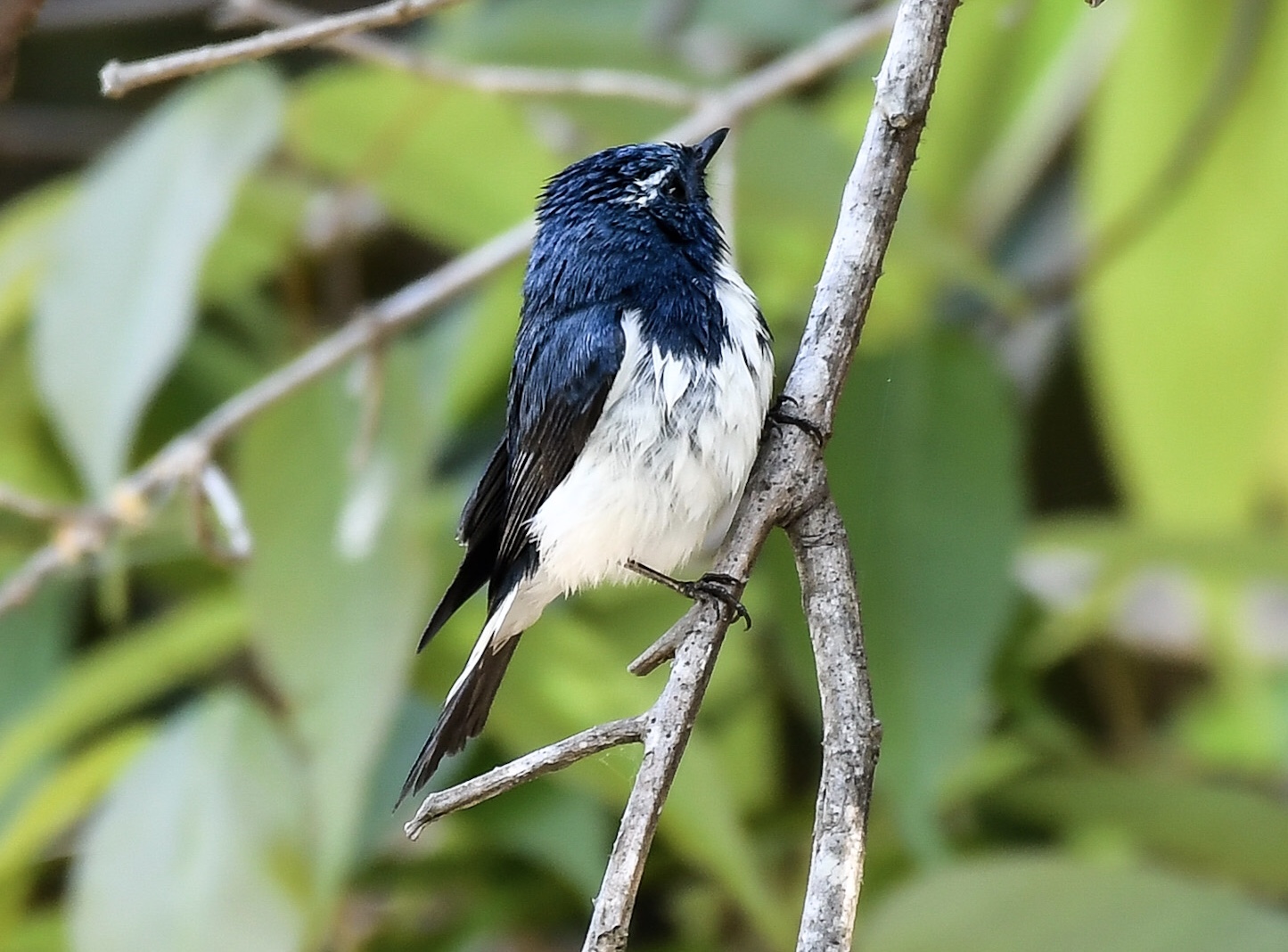 Female is similar to females of Slaty-blue and Little Pied Flycatchers, but lacks any rufous tones on the tail. Breeds in hill and montane broadleaf and pine forests; descends into lower foothills in winter. Rarely heard song a complex series of whistles and chatters; more commonly heard is the call, a dry trilling chatter, sometimes preceded by a short whistle.[eBird]
Female is similar to females of Slaty-blue and Little Pied Flycatchers, but lacks any rufous tones on the tail. Breeds in hill and montane broadleaf and pine forests; descends into lower foothills in winter. Rarely heard song a complex series of whistles and chatters; more commonly heard is the call, a dry trilling chatter, sometimes preceded by a short whistle.[eBird]
นกเด้าลมหลังเทา Grey WagtailMotacilla cinerea
Handsome long-tailed bird. Breeding male has a black throat, mostly yellow underparts. Breeding female often has some dark on the throat, paler yellow underparts. All plumages have gray head and back, with whitish eyebrow, bright yellow belly and vent. Often near flowing water with nearby rocks or surrogate rocky habitat, from mountain streams to weirs in suburban parklands. Walks quietly along shorelines or in nearby open areas, pumping its very long, white-sided tail up and down. Song is a repetitive series of high-pitched notes; calls include short, high “pseet” and buzzier flight calls.[ebird]
นกจับแมลงสีฟ้า Verditer FlycatcherEumyias thalassinus
Beautifully vivid turquoise-blue flycatcher. Adult male has dark lores. Juvenile is duller, with noticeably grayer underparts. Sits upright on exposed perches. Found in lowland and hill forests and forest edges. Song is high and undulating phrase of burry or trilled notes. Most common call is a strident “wheet!” [eBird]

Blue-throated FlycatcherCyornis rubeculoides
Small flycatcher with an orange chest and a white belly. Male is bright blue above, while the female is brown above with a rufous tail. Himalayan males have an entirely blue throat, while birds in Southeast Asia have a narrow orange stripe down the throat’s center. Confusingly similar to many other Blue Flycatchers, but extensively blue throat and limited orange underparts serve to identify the male. Female can be trickier; look out for relatively well-defined orange breast, rufous tail, and weak eyering (but no pale lores). Found in the dense undergrowth of hill forests. Song is a rambling and variable series of whistling, warbling, and chattering notes; also gives typical Cyornis “chak” and rattle calls.[eBird]
Himalayan Black Bulbul Hypsipetes leucocephalus
Medium-sized songbird with predominantly dark plumage, a very short crest, and crimson bill and legs. Long tail and bill impart an elongated appearance. Head color varies considerably across distribution, ranging from white to dark gray to black. Often travels in large flocks, which move noisily between fruiting trees. Most commonly found in broadleaf evergreen and mixed deciduous forests but also regularly visits gardens and lowland forests. Extremely noisy, with a huge repertoire, emitting various squeaks, meows, chatters, whistles, and more.
 Indian Paradise-Flycatcher Terpsiphone paradisi
Indian Paradise-Flycatcher Terpsiphone paradisi
Agraceful looking flycatcher, the adult male sport a long ribbonlike tail. The males occur in two color morphs cinnamon and white. Both color morphs sport a glossy black head with blue ring around the eye, but white morph is entirely white below while the cinnamon morph has cinnamon upperparts and tail, and dirty white underparts. The females are cinnamon above with a grayish throat, a shorter tail, and they lack the male’s blue eyering. They make short aerial sallies after insects, usually returning to the same perch. Occasionally descends to ground to pull apart insects. Chiefly found in wooded habitats. Their call is a harsh “shreew.”
Whiskered YuhinaYuhina flavicollis
Distinguished-looking small songbird with a brown mohawk of a crest. Brown above and white below with an orange nape and a small black mustache stripe. Slender white eye crescents give it a “spectacled” appearance on top of a whiskered one. Like other yuhinas, a very social bird, often seen foraging in the lower and middle levels of hilly broadleaf forests, sometimes with other species. Calls are usually an explosive pair or triad of notes that can be likened to “pee-bee!” or “pee-ah-bee!”
Mountain BulbulIxos mcclellandii
 True to its name, tends to be found in the upper reaches of forested hills and mountains. Olive-green overall, with lighter orange-buff to grayish underparts (depending on subspecies), and a streaky gray throat. Crested head, similar size, and pale throat can cause it to superficially resemble Chestnut Bulbul in poor lighting, but Mountain Bulbul has a longer-billed and paler-faced appearance. Large flocks are loud and easily detected as they fly overhead, giving sharp, repetitive, echoing calls, which can be likened to “zyi-zya” or “zya-zya”. Song is a prolonged, repetitive series of call notes.
True to its name, tends to be found in the upper reaches of forested hills and mountains. Olive-green overall, with lighter orange-buff to grayish underparts (depending on subspecies), and a streaky gray throat. Crested head, similar size, and pale throat can cause it to superficially resemble Chestnut Bulbul in poor lighting, but Mountain Bulbul has a longer-billed and paler-faced appearance. Large flocks are loud and easily detected as they fly overhead, giving sharp, repetitive, echoing calls, which can be likened to “zyi-zya” or “zya-zya”. Song is a prolonged, repetitive series of call notes.
 True to its name, tends to be found in the upper reaches of forested hills and mountains. Olive-green overall, with lighter orange-buff to grayish underparts (depending on subspecies), and a streaky gray throat. Crested head, similar size, and pale throat can cause it to superficially resemble Chestnut Bulbul in poor lighting, but Mountain Bulbul has a longer-billed and paler-faced appearance. Large flocks are loud and easily detected as they fly overhead, giving sharp, repetitive, echoing calls, which can be likened to “zyi-zya” or “zya-zya”. Song is a prolonged, repetitive series of call notes.
True to its name, tends to be found in the upper reaches of forested hills and mountains. Olive-green overall, with lighter orange-buff to grayish underparts (depending on subspecies), and a streaky gray throat. Crested head, similar size, and pale throat can cause it to superficially resemble Chestnut Bulbul in poor lighting, but Mountain Bulbul has a longer-billed and paler-faced appearance. Large flocks are loud and easily detected as they fly overhead, giving sharp, repetitive, echoing calls, which can be likened to “zyi-zya” or “zya-zya”. Song is a prolonged, repetitive series of call notes.Himalayan Black-lored TitMachlolophus xanthogenys
Strikingly-patterned tit with black-and-yellow face pattern and white-spotted wings. Black lores and overall thicker eye-stripe distinguish this species from Yellow-cheeked Tit, with which it overlaps at the far eastern end of its range. Very similar to Indian Yellow Tit, but no range overlap. Active inhabitant of foothill and montane forests, often in small flocks in the middle and upper levels of forest; joins mixed-species foraging flocks in non-breeding season. Song is a series of high thin whistles and long buzzy notes. Calls are typically high-pitched jumbled notes; also gives rasping scolds.
Grey-winged BlackbirdTurdus boulboul
A large forest thrush whose name describes its key feature; males are black and females are brown, but both have flashing silvery wings. Bright orange bill and eyering are eye-catching in dark forests. 
Female
Forages quietly in the understory of montane and submontane broadleaf evergreen forests. Often solitary, occasionally in flocks in the winter. Tends not to visit gardens and parks like Tibetan and Chinese blackbirds, but does occasionally visit feeders at hides. Sweet, “thrushy” song consists of warbled phrases, sometimes with a slightly scratchy quality.

Afternoon spot bird along the river
Himalayan Pied Kingfisher (Crested kingfisher)
The crested kingfisher is a very large 41–43 cm (16–17 in) black and white kingfisher with a shaggy crest.[8] It has evenly barred wings and tail. It lacks a supercilium and has a spotted breast, which is sometimes mixed with rufous. [Wikipedia]
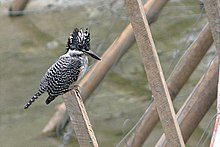 From Darap village in West Sikkim, India.
From Darap village in West Sikkim, India.
The crested kingfisher is a very large 41–43 cm (16–17 in) black and white kingfisher with a shaggy crest.[8] It has evenly barred wings and tail. It lacks a supercilium and has a spotted breast, which is sometimes mixed with rufous. [Wikipedia]

Range and habitat
It is resident in the Himalayas and mountain foothills of northern India, Bangladesh, northern Indochina, Southeast Asia and Japan. This bird is mainly found in mountain rivers and larger rivers in the foothills of mountains.
It is resident in the Himalayas and mountain foothills of northern India, Bangladesh, northern Indochina, Southeast Asia and Japan. This bird is mainly found in mountain rivers and larger rivers in the foothills of mountains.
Striated LaughingthrushGrammatoptila striata
With its short bill and loose, bushy crest, this laughingthrush resembles a dark, rather unmarked barwing. Brown overall with pencil-thin white lines all over the body. Crest is dark brown, and wings are dull rufous. Inhabits forests and adjoining areas with dense undergrowth in the Himalayan foothills. Like many other laughingthrushes, highly social and often found in flocks, which keep in contact with calls ranging from harsh screeches to hooting. Often gives a series of repeated loud, upslurred notes.[eBird]
Brown Fish-OwlKetupa zeylonensis 
Huge bulky brown owl with a finely streaked breast, a plain face, and bright yellow eyes. Also note its dirty white “bib” and the heavy brow that gives it a moody demeanor. Inhabits waterside wooded areas from lowlands up into the mountains; feeds by dropping down into and wading around in creeks, lakes, and pools. Often gives deep echoing hoots, as well as various shrieks and higher-pitched hoots.
Day3 15th April morning Birding sattal 
Dark-sided Thrush Zoothera marginata
A dark sooty thrush with an unusually long bill. Dark brown overall with a pale crescent behind the ear and weak white spotting on the underparts. More uniformly dark than other similar brown thrushes in the region. Forages quietly in dense undergrowth, probing about with its long bill near water and rocky outcrops. Larger Long-billed Thrush has a much longer bill, a darker face, and is grayer overall. Gives quiet ghostly whistles which trail off quietly.[eBird]
Tickell's ThrushTurdus unicolor
Both sexes of this thrush are fairly uniformly-colored: the male is predominantly blue-gray and the female is warm brown with a slight buffy wash to the underparts. May be confused with Indian Blackbird in southwestern wintering range, but both sexes are paler and smaller than their respective counterparts of that species. Breeds in open forest and forest edge in hilly and submontane areas; winters in similar habitat at lower altitudes. Sings melodic warbling and buzzing phrases; also gives a short bubbly bursts of “chup” notes.[eBird]
Maroon OrioleOriolus traillii
Large, pale-eyed songbird of lower and middle elevations of montane forests. Male blood red with inky black head and wings and dark bill; female similar but less richly colored. Juvenile brown above, pale with dark stippling below, paler bill, and tawny undertail coverts. Birds in Taiwan and central Vietnam are much brighter red overall. Usually seen in pairs or small flocks, sometimes with mixed-species flocks. Pairs often engage in an ethereal duet: male gives a series of melodic notes, to which the female responds with a long, airy whistle. Also gives harsh, rasping calls.
Bar-winged Flycatcher-shrikeHemipus picatus
A small passerine bird with black-and-white plumage. The head, upperparts, and tail are black. The sides of the neck and underparts are white. The wing shows a prominent white slash, and the outer tail feathers are white. The bill is black and the upper mandible is hooked at the tip. Usually found in mixed-species foraging flocks, feeding on insects in the mid-canopy by hawking prey in mid-air like flycatchers, hence the name. Inhabits a wide range of forested habitats. Song is a sweet-sounding series of bouncing notes: “tsilikee-tsilikee-tsilikee!”[eBird]
Fire-breasted FlowerpeckerDicaeum ignipectus
Tiny songbird of forested mountains and the upper reaches of hills and valleys. Adult male dark blue above and pale creamy white below with black stripe and brilliantly red patch like a bloodstain on the breast. Female much plainer, brownish-olive above and off-white below; lacks white throat of Plain and female Scarlet-backed Flowerpeckers. Song, given from a high and exposed perch, is a series of high buzzing notes followed by a trill.[eBird]
Long-tailed MinivetPericrocotus ethologus
Typical colorful minivet with red-and-black males and gray-and-yellow females. Male is very similar to Scarlet and Short-billed Minivets, but has a lumpy fork on the wing instead of a jagged ‘lightning bolt’ as in those two species. Female can be identified by a similarly simple wing patch and less extensive yellow on the head than Short-billed and Scarlet Minivets. Both sexes average longer-tailed than similar species. Usually found in pairs or small flocks in mid- to high-altitude forests. Gives a pleasant “dee-dee” and a rolling “pr’wee, pr’wee!”.[eBird]
Indian White-eye (Oriental White-eye)Zosterops palpebrosus
Hyperactive little yellow bird with an off-white belly and white “spectacles.” Found in a wide range of habitats, from mangroves to gardens to forest edge; generally favors more open forested areas, not dense tangles. Travels in flocks, sometimes mixed in with other species. Note light bouncing flight. Gives bright but faint “zwee!” calls both while foraging and in flight.[eBird]
Black-winged CuckooshrikeLalage melaschistos
An overall sooty-colored cuckooshrike with broad white tips to the tail feathers. Male is dark sooty-gray with a slaty sheen, slightly paler on rump. Underparts paler toward tail; wings black. Female is very similar to male, but paler in general, often weakly barred with dark and pale gray on underparts. Male has a black mask, while female has dark lores and a faint eyering. Juvenile is blackish-brown above and brownish-gray below, heavily scaled whitish all over, with broad white tips on wing feathers. Immature like female, but more strongly and extensively barred below. Song is a loud series of whistles “pe-pe-pe-peew-peew-pew”; sometimes the starting notes are skipped. Found in all types of woodlands, including broad-leaved forests, sometimes even near cultivation during non-breeding season.[eBird]
Spotted ForktailEnicurus maculatusStunning galaxy-like white spotting on the back separates this species from all other forktails. Picks its way through well-shaded forest streams and creeks, particularly in rocky areas; breeds in foothills and mountains, but sometimes descends in the winter. Frequently gives a loud buzzy “brzeeee!” as well as high thin whistles.
White-capped RedstartPhoenicurus leucocephalus
Chunky, brightly-colored redstart found along rushing boulder-strewn mountain streams. Black with a wine-red belly and tail and a blazing white cap; in poor lighting, appears all dark save for the cap. Sexes similar. Frequently flicks tail up and down and flares it open while perched on a streamside rock or stump. Call is a long, sharp whistle with an abrupt ending, with a far-carrying, ventriloquial quality.
Great BarbetPsilopogon virens
This largest of the barbets is colorful, but often appears all-dark from a distance. No other barbet in its range combines the features of a massive pale bill, black head, and dark olive back. Sluggish and shy; tends to stick to dense forest canopy, where it is difficult to see. Its loud hooting song (typically a series of two repetitive notes) is often the only indication of this species’s presence. Also gives a harsh, screaming “karrrrr” that has a gull-like quality.[eBird]
Black DrongoDicrurus macrocercus
An adaptable songbird of open areas such as farmland, forest edge, meadows, wetlands, and fields and a common sight as a familiar dark silhouette perched on wires, fences, or snags. Black plumage flashes blue and green iridescence in favorable light, though much less so than in Hair-crested or Bronzed Drongo. A pugnacious species, frequently chasing away larger birds with repeated dives and harsh chattering calls. A skilled mimic of other species, and a strong songster in general, delivering a wide range of pleasant fluty calls, harsh chattering, nasal notes, and high sharp whistles.
After breakfast drive to Manila 5-6 Hours Birding on the way
Garjia Temple - Garjia Temple History - Garjia Temple in Corbett
Garjiya Devi Temple is one of the very old Devi temples in India, which is to be found in the border of a gorgeous village called Girjiya close to Ramnagar in Uttrakhand. Garjiya Devi Mandir also known as the Girija Devi Temple in Ramnagar, have an eye catching attractive vision of situated over a giant rock in Kosi River. Nainital have a well-off cultural tradition and Garjiya Devi Temple Uttarakhand attracts 1000s of devotees yearly because of the divinity that the place has to offer. Positioned close to Jim Corbett National Park, Ramnagar Uttarakhand, Garjiya Devi Mandir views its vast devotee crowd mostly throughout the time of Kartik Poornima.
Kartik Poornima is the fair of lights. The Garjiya temple totally decorated with diyas lit by devotees and worshipers throughout the time of fair gives a superb panoramic vision over the Kosi River, which definitely demands for a visit to this divine Devi temple at least once in a life time.
River LapwingVanellus duvaucelii

Pied KingfisherCeryle rudis
Boldly marked black-and-white kingfisher with short, bushy crest and glossy all-dark bill. Superficially similar to Crested Kingfisher, but smaller, with a much more distinctly patterned head and breast and less erect crest. Frequently seen perched in pairs or small groups. Often hovers over water when seeking prey. Inhabits a wide range of waterside habitats, from lakes to estuaries to mangroves. Gives a variety of sharp notes, as well as dry trilling and rattling calls.
 Large-billed Crow Corvus macrorhynchos A large crow that varies in size across its range; note its relatively long, daggerlike bill with curved top. Entirely black with a variable amount of glossiness. Primarily a scavenger that feeds on carrion, leftover food from humans, and also food stolen from other birds. Often gangs up to attack and chase other birds, especially raptors. Occurs in a wide range of habitats including woodlands, urban landscapes, agricultural fields, and open scrub forests. Call varies, generally a harsh or croaking crow.[eBird]
Large-billed Crow Corvus macrorhynchos A large crow that varies in size across its range; note its relatively long, daggerlike bill with curved top. Entirely black with a variable amount of glossiness. Primarily a scavenger that feeds on carrion, leftover food from humans, and also food stolen from other birds. Often gangs up to attack and chase other birds, especially raptors. Occurs in a wide range of habitats including woodlands, urban landscapes, agricultural fields, and open scrub forests. Call varies, generally a harsh or croaking crow.[eBird]
Today we drive from outskirt of Corbett National Park. We have a chances of seeing Wall Creeper, Ibisbill, Greater Slaty woodpecker, Collared Falconet etc. But actually we did not find any of them.

To Manila is newly discovered birding destination. This place is special on Koklas Peasant and Cheer Pheasant. Mountain Scops Owl can be seen at night as well.
Information about Manila Uttarakhand
Manila of Uttarakhand is a tiny hamlet located near the more popular tourist attractions of Almora and Ranikhet. Manila is known for breath-taking views of the mighty Himalayan Range. Also popular with avid birdwatchers, Manila is home to several indigenous and migratory birds. Manila Devi temple is the most important place to visit here.
A vacation in Manila is more than therapeutic. Do visit Manila if you want to try an offbeat weekend getaway from Delhi NCR. This is the most comprehensive guide on Manila Uttarakhand where the highlights of an ideal holiday in Manila is mentioned.
White-browed Shrike-Babbler (Himalayan)Pteruthius aeralatus ripleyi
The Himalayan shrike-babbler (Pteruthius aeralatus ripleyi) is a bird subspecies found in the western Himalayas that belongs to the shrike-babbler group. The genus was once considered to be an aberrant Old World babbler and placed in the family Timaliidae until molecular phylogenetic studies showed them to be closely related to the vireos of the New World, leading to their addition in the family Vireonidae. Males and females have distinctive plumages, with the males being all black about with a cinnamon-rufous tertial patch and a distinctive white stripe running from behind the eye. The underside is whitish with some pinkish buff on the flanks. Females have a greyish head, lack the white stripe and have the upperparts and wings with greens, yellow and chestnut. The subspecies is part of a cryptic species complex that was earlier considered as one species, white-browed shrike-babbler(P. flaviscapis in the broad sense) with several subspecies.
Blyth's shrike-babbler
Pteruthius aeralatus, Edward Blyth, 1855
Blyth's shrike-babbler (Pteruthius aeralatus) is a bird species found in the eastern Himalayas and Southeast Asia from northern Burma to southern Cambodia. Like others in the genus it is found in montane forests. Males and females have different plumages and variations occur through its range with several populations being treated as subspecies. It is part of a cryptic species complex and was earlier lumped as a subspecies of the white-browed shrike-babbler
Mountain Scops-OwlOtus spilocephalus
 Small brown owl of hilly and montane broadleaf forests, rarely in parks and gardens. Dark brown above, paler on the underparts and face, with bright yellow eyes. Prominent bright white stripe between back and wings is more contrasting than in other owls in its range. Brows are frosty white, as in larger Collared Scops-Owl, but ear tufts much shorter in Mountain. Song is a long series of soft double hoots, with 5-10 second pauses between each pair of notes.
Small brown owl of hilly and montane broadleaf forests, rarely in parks and gardens. Dark brown above, paler on the underparts and face, with bright yellow eyes. Prominent bright white stripe between back and wings is more contrasting than in other owls in its range. Brows are frosty white, as in larger Collared Scops-Owl, but ear tufts much shorter in Mountain. Song is a long series of soft double hoots, with 5-10 second pauses between each pair of notes.
Day 4 - 16 April Full day Birding Manila over night manila
Our morning special focus was Cheer Pheasant and Koklas Pheasant. We spent a whole day birding around this beautiful mountainous place.
Cheer PheasantCatreus wallichii
A large, pale pheasant with a long tail, an untidy crest, and red skin around the eye. The male is pale gray, barred throughout, with thick black bands on the tail, a rust-colored lower back, and a dark belly. The female is browner with white streaks on the body, white bars on the tail, a rust-colored belly, and black spots on the breast. Shy, often found in small groups along steep, grassy hillsides in the Himalayas. Quite noisy, usually delivering a series of thin and scratchy notes.[eBird]
Koklass PheasantPucrasia macrolopha
A large and timid partridge-like pheasant of high-to-mid-altitude forests. Males have a silver-plumed body, maroon breast stripe, white neck patch, and dark greenish-black head topped with a long crest that, when erect, gives it the profile of a startled rabbit. Females are streaky brown with a faded version of the male’s white patch and breast stripe; note her short crest, buffy eyebrow, white throat bordered by dark.
Black-headed JayGarrulus lanceolatus
Largely gray with a black head, a scruffy crest, white streaks on the throat, and a pale bill. The wings and tail are blue through the middle with black barring, leading to thick black and white bands. It is omnivorous and feeds on the ground and in the trees. It can be quite bold and often occurs around human habitation, where it may feed off garbage dumps and agricultural land. The calls include a few raspy and nasal variants of a harsh “kraaa.”
Indian Paradise-FlycatcherTerpsiphone paradisi
Scarlet MinivetPericrocotus speciosus
Brilliantly-colored forest bird, typically encountered in flocks. Coloration varies significantly throughout wide distribution, with males ranging from black-and-crimson (most of mainland Asia) to black-and-yellow (southern Philippines) and black-and-orange (Java and Bali). Females are predominantly gray-and-yellow, but southern Philippine and western Indonesian birds are black-and-yellow. In all subspecies, note colored “blotches” on the wings (other minivets have cleaner wing patterns) and female’s yellow forehead. Gives high whistled “wheeep” notes, often when flying over the treetops.
Himalayan WoodpeckerDendrocopos himalayensis
A relatively large woodpecker with a black back, a white patch on the shoulders, and white spots on the flight feathers. A distinctive black stripe runs around the ears to the base of the bill. The top of the male’s head is red, while the female’s is black. Usually solitary or in pairs, searching for invertebrates along the trunks of trees in oak, pine, and mixed forests. Calls include metallic grating notes, a single-noted “chuck,” and short, rapid rolls of drumming.[eBird]
Bar-tailed TreecreeperCerthia himalayana
Typical treecreeper, brown above and white below with a short decurved bill and a long stiff tail. White is brightest on the throat and fades into gray on the lower breast and belly. Fine dark barring on the tail distinguishes this species from otherwise identical relatives in its range. Inhabits high-altitude coniferous and mixed forests, where it can often be found trailing along with mixed-species flocks.
Upland PipitAn thus sylvanus
This large pipit has an expansive range, but is uncommon and sparsely distributed throughout most of it. Breeds in foothills and mountains, but descends during the winter. Large-billed and rather thickset, with an upright stance, fine dark streaks throughout with paler underparts. Also note paler brow. May be confused with Richard’s and Blyth’s Pipits, but it is more densely streaked and with a stouter and shorter bill.
นกเค้าแคระ Collared OwletTaenioptynx brodiei
A tiny brown owl of mountains and foothills; descends into valleys and lowlands during the winter. Appears in both rufous and gray morphs, both dark above and white below with long, distinct streaks on the flanks. Tooting song, often given during the day, can be mistaken for that of a barbet, but the Collared Owlet song has four discrete notes, with the second and third notes given close together.
Cecropis daurica
 Brightly-colored swallow with a deeply forked tail, pale orangish rump, black squared-off undertail coverts, and an incomplete orange collar. Varies significantly across range: European and African birds have clean whitish or orangish underparts, while Asian birds are extensively streaked below; compare carefully with other Cecropis swallow species where range overlaps occur. Juveniles average paler and lack extensive orangish tones; may resemble house-martins but note deeply forked tail. Typically glides on stiff, flat wings, flying quite languidly with shallow wingbeats. Builds mud nests in mountains, sea cliffs and on buildings and other structures. Forages over open areas. Frequently gives a short, sparrow-like “twi’wit.”
Brightly-colored swallow with a deeply forked tail, pale orangish rump, black squared-off undertail coverts, and an incomplete orange collar. Varies significantly across range: European and African birds have clean whitish or orangish underparts, while Asian birds are extensively streaked below; compare carefully with other Cecropis swallow species where range overlaps occur. Juveniles average paler and lack extensive orangish tones; may resemble house-martins but note deeply forked tail. Typically glides on stiff, flat wings, flying quite languidly with shallow wingbeats. Builds mud nests in mountains, sea cliffs and on buildings and other structures. Forages over open areas. Frequently gives a short, sparrow-like “twi’wit.”
Himalayan Prinia (Striated Prinia))Prinia crinigera
A rather dull-plumaged songbird of fields, grasslands, forest edges, and farmland, mostly at moderate and high elevations. Often sparsely distributed and difficult to find. Gray-brown above with a pale belly and blackish streaking on head and wings. Breeding males become black-billed and darker on the face, losing the pale eyebrow that is usually shown in other plumages. Typically found singly or in pairs, clambering about in grasses and shrubbery. Often sings from an exposed perch, giving a loud but dry, rolling series of notes, slower than the song of Striped Prinia. Visually very similar to Striped Prinia, but usually separated by range. In the area of overlap, female and non-breeding male Himalayan Prinias show weaker streaking on the back and a duller rufous panel in the wings. Breeding males are distinguished by their darker faces without an eye-stripe. Also similar to Burmese Prinia, but there is little or no overlap in range, and Himalayan Prinia is distinguished by having more streaking, especially along the sides of the breast.
Large-tailed NightjarCaprimulgus macrurus
An intricately patterned nocturnal bird, usually found roosting on the ground or a low branch in open forest, secondary growth, and cultivated areas. Brownish gray overall, with a rich brown ear patch and chestnut-and-black dappled wings. Exposes bright white tail corners when flushed. Sometimes found in parks and gardens, where it hawks for insects below street lamps. Song a repeated, soft “tok tok tok,” somewhat recalling the sound of a car's locking sounds.
Day 5 17th April after Breakfast drive to Chopta .
Today we check out early morning and proceed Birding on the way. We have got more pictures of Cheer pheasant and Kocklass pheasant
Black KiteMilvus migrans
Medium-sized, rather nondescript raptor with overall dark plumage. Varies considerably across range, but always note tail fork (can disappear when tail is fully open), and short head and neck. Juvenile averages paler and more contrastingly-marked. Flight style buoyant, gliding and changing direction with ease. Frequently forages in urban areas, rubbish dumps, aquatic habitats, and grassland, but usually avoids heavily forested areas. Sometimes solitary, but also gathers in large flocks on migration and at good feeding areas.
View from our hotel.Common Palm Civet อีเห็นข้างลาย
Day 6 18th April Full day Birding Chopta over chopta
Chopta is a small region of meadows and evergreen forest area, a part of Kedarnath wildlife sanctuary located in Uttarakhand state, India and a base for trekking to Tungnath, the third temple of Panch Kedar which lies 3.5 kilometres away. Wikipedia
We have a two full days to explore this region. Our prime target will be Himalayan Monal. At 7.15 am our dream come true.
Himalayan MonalLophophorus impejanus
Decked out in all the colors of the rainbow, the male is the image of iridescence; green crested head, red neck, green shoulders, blue back, orange tail, and black underparts. When displaying or flushed, flashes a bright white patch on the back. Female is nowhere near as brightly-colored, with a pale blue eye patch, white throat, and streaky brown body. Found in Himalayan hill forest, typically in areas with extensive rhododendron and bamboo-dominated understory. 

Green-tailed SunbirdAethopyga nipalensis
The species’ name is technically accurate, but the male’s bright greenish-blue head is much more noticeable than his tail. Also note his red upper back and bright yellow underparts. Female is olive-yellow with paler underparts and a grayish head. Note the lack of a strongly contrasting pale rump patch as compared to female Mrs. Gould’s Sunbird. Green-tailed inhabits montane and hill forests and forest edge. Gives a sharp “zit!” and ringing twitters.[eBird]
Collared Grosbeak
Mycerobas affinis
Fire-capped TitCephalopyrus flammicep
 More of a soft blush than a burning flame, the red patch on the male’s face is nonetheless unique. The female lacks the red patch, but is still distinctive in her size, small sharp bill, and pale wingbars. Both sexes are yellow above and pale gray below, with the male being more predominantly yellow than the female. Found in montane broadleaf forest at middle to high elevations, sometimes mixed in with other species; some populations descend to lower foothills and lowlands in the winter. Song is an undulating series of twitters, chips, and trills; also twitters and trills when flocking.
More of a soft blush than a burning flame, the red patch on the male’s face is nonetheless unique. The female lacks the red patch, but is still distinctive in her size, small sharp bill, and pale wingbars. Both sexes are yellow above and pale gray below, with the male being more predominantly yellow than the female. Found in montane broadleaf forest at middle to high elevations, sometimes mixed in with other species; some populations descend to lower foothills and lowlands in the winter. Song is an undulating series of twitters, chips, and trills; also twitters and trills when flocking.Scaly-bellied WoodpeckerPicus squamatus
A large green woodpecker with a distinctive black-and-white scaly pattern running from the belly to the tail. The crown is red in males and black in females. It inhabits open forests and scrub, where it will often feed on the ground to look for ants and termites. Similar to Streak-throated Woodpecker, but the Scaly-bellied Woodpecker has an unmarked throat and breast, a longer bill, barring on the uppertail, and a darker cheek stripe. Calls include a high-pitched “kwik” and a ringing “kwee-kik.”[eBird]
Himalayan tahr
DietThe herbivorous diets of the Himalayan tahrs leave them spending most of their time grazing on grasses and browsing on leaves and some fruits. Their short legs allow them to balance while reaching for the leaves of shrubs and small trees. The tahr consumes more woody plants than herb species with as much as 75% of the tahr diet consisting of natural grasses.The tahr, like most members of the bovid family, are ruminants and have complex digestive systems . A multi-chambered stomach allows the tahr to repeatedly regurgitate its food, chew it, and obtain nutrients from otherwise indigestible plant tissues.[Wikipedia]
Variegated LaughingthrushTrochalopteron variegatum
Soft brown laughingthrush with a yellowish-white cheek patch and a diffuse black mask. Also note small white “teardrop” behind the eye. A species of middle to high elevations, ranging up above the treeline. Favors open forest and forest edge; often closely associated with rhododendrons. Short ringing song has a somewhat slurred, twangy quality.
Common CuckooCuculus canorus
Found in woodland, heathland, farmland with hedges, marshes with scattered bushes. "COO-koo" song (like a cuckoo clock) often given from open perch. Note long wings and tail, barred belly, rather small bill. Flight direct and often low, suggesting a hawk or falcon. Extremely similar in appearance to various other Cuculus cuckoos across its range; note the combination of white vent, staring yellow irises, and overall large size. Lays eggs in nests of other birds, particularly pipits and reed warblers, which raise the young cuckoos.
Himalayan Buzzard Buzzard
Buteo refectus

A large hawk with a confusing range and unclear identification criteria. Resident in the Himalayas and a breeder in adjacent areas of the Qinghai-Tibetan Plateau. A large “typical” buzzard, brown overall with blotchy patterning on the breast, dark upper “trousers,” and dark “elbows” and trailing edge on the underwing. Juvenile streakier below with a more finely barred tail and paler trailing edge. Compare with extremely similar Upland and Eastern Buzzards; note less eagle-like proportions than Upland, as well as marginally darker “trousers” and more prominent trailing edge than Eastern.
Bearded Vulture (Lammergeier)
Gypaetus barbatus
Breathtakingly majestic inhabitant of high and remote mountain ranges, where they build large nests on cliff ledges or in caves. Even as a distant speck, this is an unmistakable raptor, with an almost albatross-like wing shape and span, coupled with a long diamond-shaped tail. Adults are orange-rust below with a dark underwing, and slate gray above. The young are gray with a dark head. Cruises along ridgetops on flat wings, sometimes arched downwards.
Himalayan Griffon (Himalayan Vulture)Gyps himalayensis

A regal raptor of steppes, valleys, and mountainous regions, this large scavenger is fairly common throughout most of its range. Adult is sandy brown with a pale, featherless head. When in flight, the bird has black primaries and a small-headed, squared-winged appearance. Usually seen singly or in small groups; gathers in large flocks at a carcass. The principal scavenger at Tibetan sky burials.[eBird]
Rock Pigeon (Blue Rock Pigeon)Columba livia
Fairly large pigeon with wild and feral populations throughout the world. True wild birds nest on cliffs and in caves from western Europe to central Asia. Pale gray overall with two bold black wingbars and iridescent purple and green on neck. Feral varieties are common in cities and farmland, often in large flocks. Variable plumage: some identical to wild-type birds, but can be completely black, white, or orangey-brown and any combination in between.
White-tailed NuthatchSitta himalayensis
 Simply-colored nuthatch with gray upperparts and pale orange underparts. Difficult to distinguish from similarly-colored nuthatches, but averages smaller than Chestnut-bellied Nuthatch, and has a bright white spot on the tail base and a clean tan vent instead of a white-and-orange-striped one. Resides in Himalayan foothills, where it often forages in the middle and upper levels with mixed-species flocks.
Simply-colored nuthatch with gray upperparts and pale orange underparts. Difficult to distinguish from similarly-colored nuthatches, but averages smaller than Chestnut-bellied Nuthatch, and has a bright white spot on the tail base and a clean tan vent instead of a white-and-orange-striped one. Resides in Himalayan foothills, where it often forages in the middle and upper levels with mixed-species flocks.
Gray LangursGray langurs, also called Hanuman langurs and Hanuman monkeys, are Old World monkeys native to the Indian subcontinent constituting the genus Semnopithecus.Traditionally only one species Semnopithecus entellus was recognized, but since about 2001, additional species have been recognized. The taxonomy has been in flux, but currently eight species are recognized.[Wikipedia]
These langurs are largely gray (some more yellowish), with a black face and ears. Externally, the various species mainly differ in the darkness of the hands and feet, the overall color and the presence or absence of a crest.[4][5] Typically all north Indian gray langurs have their tail tips looping towards their head during a casual walk whereas all south Indian and Sri Lankan gray langurs have an inverted "U" shape or a "S" tail carriage pattern.[6] There are also significant variations in the size depending on the sex, with the male always larger than the female. The head-and-body length is from 51 to 79 cm (20 to 31 in). Their tails, at 69 to 102 cm (27 to 40 in) are always longer than their bodies.[7] Langurs from the southern part of their range are smaller than those from the north. At 26.5 kg (58 lb), the heaviest langur ever recorded was a male Nepal gray langur.[5] The larger gray langurs are rivals for the largest species of monkey found in Asia. The average weight of gray langurs is 18 kg (40 lb) in the males and 11 kg (24 lb) in the females.[7]
Rufous-vented TitPeriparus rubidiventris
 Anactive and social small bird of broadleaf and mixed forests, usually in hilly regions. Thin, rather turnip-like crest is often held vertically. Gray with a black head marked by bright white cheek patches. May be confused with Coal Tit, but has a less wispy crest, lacks wingbars, and averages darker and more contrasting overall. Gives high thin calls, often heard as a flock whizzes overhead.
Anactive and social small bird of broadleaf and mixed forests, usually in hilly regions. Thin, rather turnip-like crest is often held vertically. Gray with a black head marked by bright white cheek patches. May be confused with Coal Tit, but has a less wispy crest, lacks wingbars, and averages darker and more contrasting overall. Gives high thin calls, often heard as a flock whizzes overhead.
Stripe-throated YuhinaYuhina gularis
Large brown yuhina with a tall, upswept crest and black-and-orange panels on the wings.
Streaked throat is diagnostic but difficult to see; best told apart from other yuhinas by relatively undistinguished head pattern. Inhabits broadleaf and mixed forests in hilly and montane areas. Gives loud, nasal notes while moving through the middle and upper levels in flocks, often with other species.
Rufous-bellied WoodpeckerDendrocopos hyperythrus
 A beautiful woodpecker with three disjunct populations: an eastern one which breeds in northeastern China and Russia and winters in southeastern China, a western one in the Himalayas, and a southern one in southern mainland Southeast Asia. In all populations, note bright orange neck and belly, as well as black-and-white spotted wings. Bright red crown is found only on the male; the female has a patchy black and white one. Can be found in a wide range of foothill and lowland forest; favors mixed evergreen forests in the Himalayas, and open dry forest in Southeast Asia. Gives a range of rapid chattering calls and has a short, rapid drum which trails off towards the end.
A beautiful woodpecker with three disjunct populations: an eastern one which breeds in northeastern China and Russia and winters in southeastern China, a western one in the Himalayas, and a southern one in southern mainland Southeast Asia. In all populations, note bright orange neck and belly, as well as black-and-white spotted wings. Bright red crown is found only on the male; the female has a patchy black and white one. Can be found in a wide range of foothill and lowland forest; favors mixed evergreen forests in the Himalayas, and open dry forest in Southeast Asia. Gives a range of rapid chattering calls and has a short, rapid drum which trails off towards the end.
The large-eared pika has brownish-grey fur tinged with ochre. The forehead, cheeks and shoulder region have a reddish tinge which is more obvious in summer. The underparts are greyish-white.The four legs are all about the same length and the feet, including the soles, are covered with fur. An adult large-eared pika is 15 to 20.4 cm (6 to 8 in) long.[Wikipedia]
Red-headed BullfinchPyrrhula erythrocephala
Stunning masked finch of montane and foothill forests. Males have a bright orange head and breast; females have a light yellowish wash to the back of the head and neck. Both sexes have soft gray backs and black wing panels. Forages in small to medium-sized flocks in low vegetation on or near the ground; sluggish, often clambering about in shrubbery. Listen for soft tooting vocalizations.
Pink-browed RosefinchCarpodacus rodochroa
Graceful medium-sized rosefinch of the Himalayas. Male is bright raspberry pink with a clean “browed” facial pattern and faint streaking on the back. Female is brown with streaked buffy underparts, broad white eyebrows, and lightly streaked pale cheeks and throat. Favors subalpine forest edge and grassy hillsides with scrubby cover in the breeding season; descends in the winter
Himalayan Bluetail (Orange-flanked Bush-Robin)Tarsiger rufilatus
 Brightly-colored adult male is unmistakable in range: blazing sapphire blue with orange flanks and white throat and belly. Female is brown with a white throat, orange flanks, and pale blue rump and tail. Red-flanked Bluetail can be confusing where the two overlap in the latter’s migratory and winter range; note Himalayan’s brighter blue eyebrow and brighter, deeper blue upperparts in the male. Female is slightly more grayish than Red-flanked, but this identification can be much more difficult, and females may not be safely separable if not with male. Himalayan’s song is a simple, repeated “tcher-thcew-wee!”. Breeds in submontane forest up to the treeline; descends in the winter, often moving into edge habitats. A frequent sight along forest tracks.
Brightly-colored adult male is unmistakable in range: blazing sapphire blue with orange flanks and white throat and belly. Female is brown with a white throat, orange flanks, and pale blue rump and tail. Red-flanked Bluetail can be confusing where the two overlap in the latter’s migratory and winter range; note Himalayan’s brighter blue eyebrow and brighter, deeper blue upperparts in the male. Female is slightly more grayish than Red-flanked, but this identification can be much more difficult, and females may not be safely separable if not with male. Himalayan’s song is a simple, repeated “tcher-thcew-wee!”. Breeds in submontane forest up to the treeline; descends in the winter, often moving into edge habitats. A frequent sight along forest tracks.
 Brightly-colored adult male is unmistakable in range: blazing sapphire blue with orange flanks and white throat and belly. Female is brown with a white throat, orange flanks, and pale blue rump and tail. Red-flanked Bluetail can be confusing where the two overlap in the latter’s migratory and winter range; note Himalayan’s brighter blue eyebrow and brighter, deeper blue upperparts in the male. Female is slightly more grayish than Red-flanked, but this identification can be much more difficult, and females may not be safely separable if not with male. Himalayan’s song is a simple, repeated “tcher-thcew-wee!”. Breeds in submontane forest up to the treeline; descends in the winter, often moving into edge habitats. A frequent sight along forest tracks.
Brightly-colored adult male is unmistakable in range: blazing sapphire blue with orange flanks and white throat and belly. Female is brown with a white throat, orange flanks, and pale blue rump and tail. Red-flanked Bluetail can be confusing where the two overlap in the latter’s migratory and winter range; note Himalayan’s brighter blue eyebrow and brighter, deeper blue upperparts in the male. Female is slightly more grayish than Red-flanked, but this identification can be much more difficult, and females may not be safely separable if not with male. Himalayan’s song is a simple, repeated “tcher-thcew-wee!”. Breeds in submontane forest up to the treeline; descends in the winter, often moving into edge habitats. A frequent sight along forest tracks.Chestnut-tailed Minla (Bar-throated Siva)Actinodura strigula 
This brightly-colored social bird is a frequent attendant of mixed-species flocks. Relatively large size and combination of flashy colors and patterns scattered across its brownish body make this species unmistakable. Found in mid- to high-elevation wooded areas; prefers broadleaf and mixed evergreen forests. Gives a song of 3-4 sweet-sounding slurred whistles and a loud, squeaky call that sounds like a dog toy being stepped on.[eBird]
นกกระจิ๊ดแถบปีกสีส้ม Orange-barred Leaf Warbler Phylloscopus pulcher
Moments of Monal
 |
| The moment of Monal |
Rufous-gorgeted FlycatcherFicedula strophiata
A bold little flycatcher of mid- to high-altitude forests with a flashing black-and-white tail. Male is brown above with a black face, white eyebrow, and orange throat patch (gorget). The female is essentially a faded version of the male with a dark gray face and a pale, largely unnoticeable gorget. Usually perches at middle levels, sallying from its perch to catch flying insects. Often joins mixed-species feeding flocks.
 |
| Ultramarine Flycatcher |
Indian jackal
.
Common MynaAcridotheres tristis
A large, black-and-brown myna with white wing patches, yellow bill, and yellow legs. Gregarious and often found in noisy flocks. Aggressive, often driving away other birds. Can be found just about anywhere but the densest forests. Native to southern Asia, where it is among the most common species. Widely introduced elsewhere in the world, including Australia, New Zealand, and Hawaii
Eurasian HoopoeUpupa epops
Utterly unmistakable orange bird with a zebra-striped wings, a Chinese fan of a crest (usually held closed, but often raised just after landing), and a rapier of a bill. Favors semiopen habitats such as heathland, farmland, orchards, grassy lawns, where it feeds on the ground, probing with its long bill for insects. Flight fast and fairly direct, with rather deep wingbeats. Unlikely to be confused, but flight pattern and round wings may loosely resemble that of woodpeckers; note far longer and thinner bill. Song is a distinctive “hoopoopoo.”
Speckled PiculetPicumnus innominatus
Unique tiny woodpecker with olive-yellow wings, brown-and-white striped head, and black-spotted white breast and belly. Other piculets in range look very different, being mostly unmarked. Call is an extremely high “tsik tsik tsik.” Drums very loudly for such a diminutive bird. Widespread, found in lowland and foothill forests, often in areas with bamboo stands.
White-browed Shrike-Babbler (Himalajawürgervireo)Pteruthius aeralatus ripleyi
A small, stout bird with a large head, usually found at mid-level in forests. Male is smartly attired: clean white below and black above with a gray back, a white eyebrow, and two bright, flame-like orange stripes towards the wingtips. Females have the same general patterning, but are much more faded, replacing black with gray and orange with yellow-green. Often joins mixed flocks in foothill and montane forests, where it can be fairly common. Song is a forceful series with slight breaks every second or third note: “dyudyu-dyu-dyudyu!”
Black-faced WarblerAbroscopus schisticeps
A brightly-colored and active small warbler of hilly and montane forests. Often follows other species in mixed flocks, predominantly foraging in the middle layers with warblers and fulvettas. Strikingly colored; greenish-yellow wings and white underbelly are similar to many other warblers, but combination of gray head, black face, and bright yellow eyebrows and throat set it apart from any other similarly-sized species.
Long-tailed ShrikeLanius schach
A large, noisy shrike typical of open habitats across Asia. Adults have a dark mask and a light gray upper back with a variable amount of orange on lower back and flanks. Eastern subspecies has complete black cap; melanistic form has more extensive dark mask and is darker overall. Smaller Bay-backed Shrike has thicker black mask; Gray-backed Shrike has darker gray back and lacks orange coloration and white in wings. Juveniles difficult to separate from other juvenile shrikes. Gives loud, screeching calls; also mimics other birds. 

 |
| Himalayan Blacked Bulbul |
 |
| Maroon Orio |
Small NiltavaNiltava macgrigoriae
 Size distinguishes this species from other niltavas; coloration is quite similar to Large Niltava, which is double the size. Male Small Niltava is bright blue with the brightest patches on the shoulder and forehead. Female is brown with a white eyering and a rufous tail and wingtips. Forages in the lower and middle levels of hilly and montane forests, usually singly. Listen for its distinctive song, a cleanly descending “wee-dee-dee.”
Size distinguishes this species from other niltavas; coloration is quite similar to Large Niltava, which is double the size. Male Small Niltava is bright blue with the brightest patches on the shoulder and forehead. Female is brown with a white eyering and a rufous tail and wingtips. Forages in the lower and middle levels of hilly and montane forests, usually singly. Listen for its distinctive song, a cleanly descending “wee-dee-dee.”
Day 8 - 20th April
Chestnut-crowned LaughingthrushTrochalopteron erythrocephalum
Speckled Wood-PigeonColumba hodgsonii
 Uniquely colored large pigeon of mid- to high-altitude broadleaf and mixed forests. Grayish overall, with a deep maroon back, ashy gray head, chestnut streaking on the belly, and fine white spots on the upperwing. Usually seen in pairs or small flocks, feeding at fruiting trees. Listen out for its call, a deep, booming ‘Woo-hoo! Hooo…hooo,’ often heard emanating from the canopy.
Uniquely colored large pigeon of mid- to high-altitude broadleaf and mixed forests. Grayish overall, with a deep maroon back, ashy gray head, chestnut streaking on the belly, and fine white spots on the upperwing. Usually seen in pairs or small flocks, feeding at fruiting trees. Listen out for its call, a deep, booming ‘Woo-hoo! Hooo…hooo,’ often heard emanating from the canopy.
Russet sparrow
Common RosefinchCarpodacus erythrinus
 Medium-sized, dumpy finch with a stubby bill. Male are distinctive with a red head, breast, and rump, brown eye-mask, and white belly. The amount of red varies with age. Females and juveniles are a rather unprepossessing, uniform brown inviting confusion with female House Sparrows; note the two pale wingbars. Breeds at both low and high elevations in deciduous scrub, meadows, and marsh edges as well as clearings in forest. Far-carrying, whistled, typically 3-note song is memorable.
Medium-sized, dumpy finch with a stubby bill. Male are distinctive with a red head, breast, and rump, brown eye-mask, and white belly. The amount of red varies with age. Females and juveniles are a rather unprepossessing, uniform brown inviting confusion with female House Sparrows; note the two pale wingbars. Breeds at both low and high elevations in deciduous scrub, meadows, and marsh edges as well as clearings in forest. Far-carrying, whistled, typically 3-note song is memorable.
 |
| Grey-headed Woodpecker |
Black-chinned BabblerCyanoderma pyrrhops
Small buffy babbler with a black throat and lores. Social, often occurring in flocks with other species. Forages close to or on the ground in open forest, shrubby edge, and overgrown gardens and orchards. Song is a monotone or slightly ascending series of piping whistles. Calls include a sped-up version of the song and harsh churring.[eBird]
Day 9 - 21st April Full day Birding Mandal over night Mandal
After rain and hail
Birding continue again.
Brown DipperCinclus pallasii
Mandal is slightly lower elevation. There are good species of birds this place offers. Pied Thrush, Rufous-bellied woodpecker, Scarlet Finch are some of the good birds
Mandal village - Gateway to Rudranath
The Mandal Village is a tiny remote hamlet of Uttarakhand located in the Chamoli district of Uttarakhand. It is one amongst those left out yet must travel villages in Uttarakhand.
Mandal Village is located in the midst of the pristine beauty of the Garhwal Himalayas of Uttarakhand. At Mandal you will find yourself indulged in the gorgeous topography of the state of Uttarakhand.
It is a village that is loaded with the majestic colors of the Himalayan wildlife and natural vegetation. The Mandal Village is an amazing place to sit back for a day and enjoy the lush grandeur of the Himalayas while sipping on to scrumptious Himalayan Tea.
Here you will find a huge variety of biodiversity peaking through the dense forest of Pine, Spruce, and Maple. Mandal is not only famous for its captivating beauty but it also serves as the base camp to a number of treks that lead to the majestic lands in the Garhwal Himalayas of Uttarakhand.

 |
| Blue-throated Barbet |
 |
| Great Barbet |
Jungle MynaAcridotheres fuscus

Typical “crested myna,” dark gray overall (darkest on head and wings) with white vent and wing patches, yellow-orange bill and legs, and small tufted crest above base of bill. Contrary to its name, usually found in open areas such as farmland, fields, and parks. Similar in appearance to Javan Myna, but shorter-crested, paler overall, and with partially black bill (Javan has entirely yellowish-orange bill). Song consists of harsh, crackling, yet melodic notes.
Grey BushchatSaxicola ferreus
 Small songbird of forest edges, open scrub, and farmland, usually seen in pairs or small flocks. Male is silvery gray overall with black face and white supercilium, throat, belly, and wing patches. Female dull brown overall, with a rufous tail and faded version of the male's head pattern. Bold but not very active, usually seen perching for long periods on posts and overhead wires. Song is bright and melodious, but often has a somewhat faltering quality, trailing off towards the end. Most common call is a harsh rising “bzeeet!”.
Small songbird of forest edges, open scrub, and farmland, usually seen in pairs or small flocks. Male is silvery gray overall with black face and white supercilium, throat, belly, and wing patches. Female dull brown overall, with a rufous tail and faded version of the male's head pattern. Bold but not very active, usually seen perching for long periods on posts and overhead wires. Song is bright and melodious, but often has a somewhat faltering quality, trailing off towards the end. Most common call is a harsh rising “bzeeet!”.
Black-winged CuckooshrikeLalage melaschistos
An overall sooty-colored cuckooshrike with broad white tips to the tail feathers. Male is dark sooty-gray with a slaty sheen, slightly paler on rump. Underparts paler toward tail; wings black. Female is very similar to male, but paler in general, often weakly barred with dark and pale gray on underparts. Male has a black mask, while female has dark lores and a faint eyering. Juvenile is blackish-brown above and brownish-gray below, heavily scaled whitish all over, with broad white tips on wing feathers. Immature like female, but more strongly and extensively barred below. Song is a loud series of whistles “pe-pe-pe-peew-peew-pew”; sometimes the starting notes are skipped. Found in all types of woodlands, including broad-leaved forests, sometimes even near cultivation during non-breeding season.[eBird]
Blue-fronted Redstart
Phoenicurus frontalis Male is unmistakable, with his orange breast, belly, and tail and ultramarine-blue head and back. Female is brown with no wingbars and an orange tail and lower belly; watch out for the unique upside-down black ‘T’ on her tail. The species breeds in brushy open subalpine areas and winters in foothills in scrubby areas, field edges, and gardens. Like many other redstarts, often perches visibly, bobbing tail up and down. Song is a series of pleasant warbles and bubbly buzzing. Calls include a distinctive wet ticking, often preceded by a quiet whistled note
Female

Siberian Stonechat (Common Stonechat)Saxicola maurus
and can pose identification problems where the species overlap; look for Siberian’s larger white wing patch, duller orange on the chest, and whiter rump. Amur Stonechat is extremely similar, and in areas of overlap, or in cases of vagrancy, most individuals are inseparable based on current knowledge.
Chestnut-bellied Rock-ThrushMonticola rufiventris
An upright bird of montane forests. Male is dark blue above and orange below, with a dark face. Female looks completely different: gray-brown with boldly scaled underparts and a whitish crescent behind the ear. Female White-throated Rock Thrush is similar, but browner, with a spotted back and no pale ear crescent. Usually seen in pairs, perched quietly on a rock or exposed branch at canopy level. Song is a series of buzzy whistles; most common call is a distincive low, harsh scratching noise
 |
| White-browned Rosefince |
Red-vented BulbulPycnonotus cafer
Crested Serpent-EagleSpilornis cheela
 A rather large, heavily built eagle with a dark, white-tipped bushy crest that gives it a distinctive large-headed look. When raised in alarm, the crest frames the whole face, highlighting the bare yellow lores and eyes, making the head look larger and fiercer. The rufous-brown underparts have neatly arranged dark-edged bold white spots. In flight, shows broad rounded wings with a wide black trailing edge. Juvenile predominantly white with dark streaks below; also note dark mask. Commonly seen perched upright in well-wooded areas, with wingtips nearly covering the broad white sub-terminal band on the tail. Its 1-3 note scream is often heard in the forest[eBird]
A rather large, heavily built eagle with a dark, white-tipped bushy crest that gives it a distinctive large-headed look. When raised in alarm, the crest frames the whole face, highlighting the bare yellow lores and eyes, making the head look larger and fiercer. The rufous-brown underparts have neatly arranged dark-edged bold white spots. In flight, shows broad rounded wings with a wide black trailing edge. Juvenile predominantly white with dark streaks below; also note dark mask. Commonly seen perched upright in well-wooded areas, with wingtips nearly covering the broad white sub-terminal band on the tail. Its 1-3 note scream is often heard in the forest[eBird]
Black-faced WarblerAbroscopus schisticepsA brightly-colored and active small warbler of hilly and montane forests. Often follows other species in mixed flocks, predominantly foraging in the middle layers with warblers and fulvettas. Strikingly colored; greenish-yellow wings and white underbelly are similar to many other warblers, but combination of gray head, black face, and bright yellow eyebrows and throat set it apart from any other similarly-sized species.
Rufous-bellied NiltavaNiltava sundara
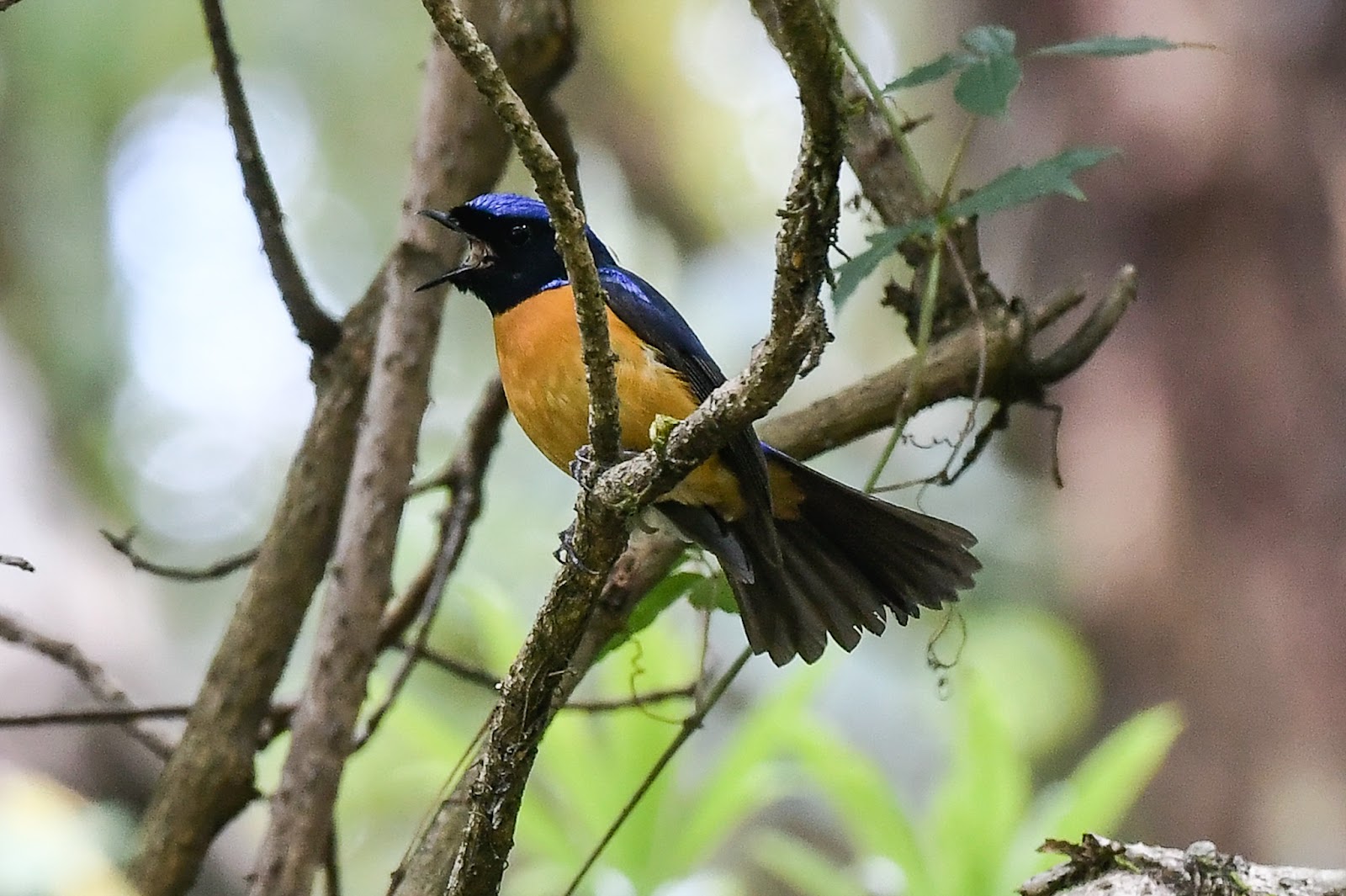 As in other niltavas, the male is brilliantly colored while the female is drab brown overall. Male bright blue with an orange belly; female is brown with a white throat strap and a small blue crescent on the neck. Female is very similar to other niltavas, intermediate in size between Little and Large niltavas, with stronger warm tones on the wings and tail than Fujian Niltava. Active in the middle and upper layers of broadleaf and mixed hill forests, where it often associates with other species in mixed flocks. Gives a series of high, piercing metallic whistles.
As in other niltavas, the male is brilliantly colored while the female is drab brown overall. Male bright blue with an orange belly; female is brown with a white throat strap and a small blue crescent on the neck. Female is very similar to other niltavas, intermediate in size between Little and Large niltavas, with stronger warm tones on the wings and tail than Fujian Niltava. Active in the middle and upper layers of broadleaf and mixed hill forests, where it often associates with other species in mixed flocks. Gives a series of high, piercing metallic whistles. 
Shikra

Almost everyday we have vegetarian foods for all of meals or extra special service with egg or chicken curry sometime.But tonight dinner our Alpine hotel owner and his family was prepare chinese food for us.Thank you for these very delicious foods and yours kindness
Himalayan RubythroatCalliope pectoralis
 |
7.50 am.We stop for breakfast at Karnaprayah
Karnaprayag - Third Prayag in Panch Prayag
Karnaprayag is located in Chamoli district, 130 Km ahead from Badrinath Temple. The merger of river Alaknanda & Pindari river happens at this place. According to legends, Karna warrior of Mahabharata, performed severe penance here to acquire impregnable shield (Kavacha & kundal) from Lord Surya. Along with religious importance, this place also offers huge opportunities to adventure lovers & avid nature enthusiast. The serenity of the place had even allure Swami Vivekananda who had mediated here for a few days.
After Breakfast drive to sattal 9-10 hours drive birding point on the way
Steppe EagleAquila nipalensis
A large eagle with rich brown plumage, wide wings, and seven well-splayed “fingers” at the wingtip. Adults are entirely dark brown; juveniles and immatures at rest show a distinctive wide white band bordered with black on the wing. In flight, this transforms into a white traverse band on the underwing that forms the base of the primary and secondary feathers. Birds take about four years to attain adult plumage. Frequents open grasslands, deserts, scrub, wetlands, and mountains, and is a regular carcass feeder along with vultures.
Chukar PartridgeAlectoris chukar
Boldly-patterned quail-like bird, often in small flocks on dry rocky slopes with sparse grass and brush. Male and female similar. Overall pale sandy brownish-gray with bold black stripe on the face. Also look for red bill and legs and black stripes on sides.  Usually seen scurrying around on the ground, but males perch conspicuously when singing, often on large rocks. Song is a series of scratchy notes; sounds like it’s saying its name with emphasis on the second syllable: “chuKAR, chuKAR, chuKAR.” Native to Asia and the Middle East, where range barely overlaps with any similar species; note creamy throat to help separate from Rock Partridge. Introduced and well-established in western North America, New Zealand, and Hawaii; escaped cage birds or hunting stock can occur elsewhere.
Usually seen scurrying around on the ground, but males perch conspicuously when singing, often on large rocks. Song is a series of scratchy notes; sounds like it’s saying its name with emphasis on the second syllable: “chuKAR, chuKAR, chuKAR.” Native to Asia and the Middle East, where range barely overlaps with any similar species; note creamy throat to help separate from Rock Partridge. Introduced and well-established in western North America, New Zealand, and Hawaii; escaped cage birds or hunting stock can occur elsewhere.
STOP2.
Cool Village Kosya Kutauli
Tawny Fish-OwlKetupa flavipes
A large brown owl with wide yellow eyes and sideways-drooping ear tufts; rich tawny brown plumage with black mottling unique in its range. Always found in close proximity to rivers or lakes, usually roosting in dense waterside groves by day. Hunts fish from a low perch at dusk and at night. Hunting birds are seldom observed, as they hunt from tangles and other dense vegetation. Other horned owls in range are either much smaller (Long-eared Owl, scops-owls) or much larger (Eurasian Eagle-Owl). Pairs duet, giving 2-3 deep hoots; younger birds beg with higher-pitched screeching calls.
Mountain Hawk-EagleNisaetus nipalensis
A large, bulky eagle of forested hills. The small head, immensely broad wings, and large, often fanned-out tail give this bird the silhouette of a hawk on steroids when in flight.  When perched, the thin upright crest separates this species from any hawk. Adults are dark brown above with thick brown bars on the belly and vertical black streaks on the throat. Juveniles are paler below, with brown upperparts showing neat pale-edge feathers and mostly pale head, lightly stippled or streaked with brown.
When perched, the thin upright crest separates this species from any hawk. Adults are dark brown above with thick brown bars on the belly and vertical black streaks on the throat. Juveniles are paler below, with brown upperparts showing neat pale-edge feathers and mostly pale head, lightly stippled or streaked with brown.
Day 11- 23 April the last day of Uttarakhand trip.Saw the best birds picture shown on a wall of reception area of this hotel mean we have remain only 1 spicy which we should have to spot .Rufous-chinned Laughingthrush
The same place same area but in differently feeling.This morning we enjoy collecting the picture of happy birds around the shiny lake.


















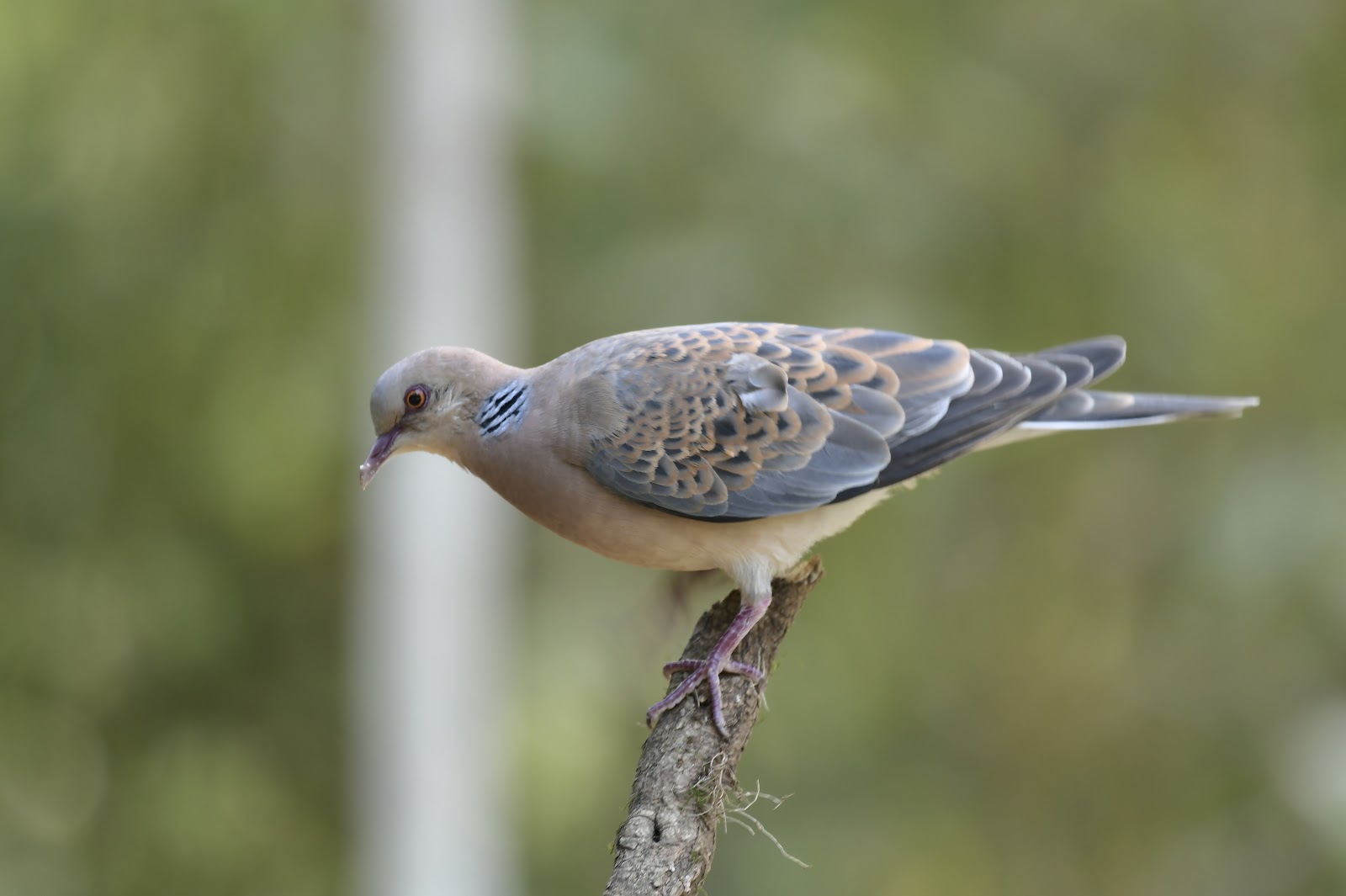

























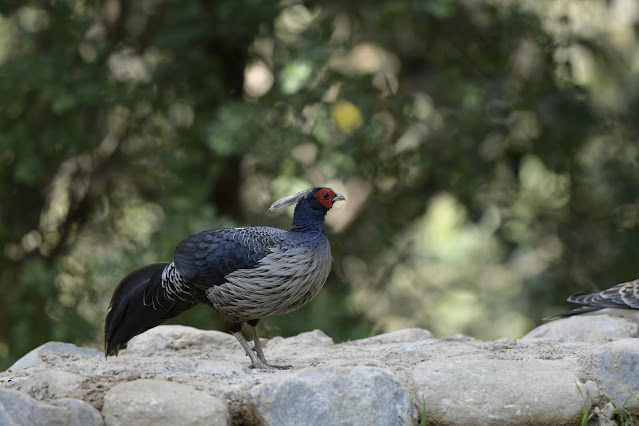


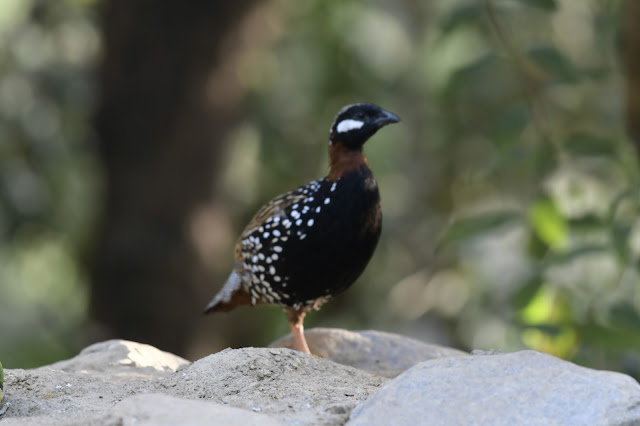





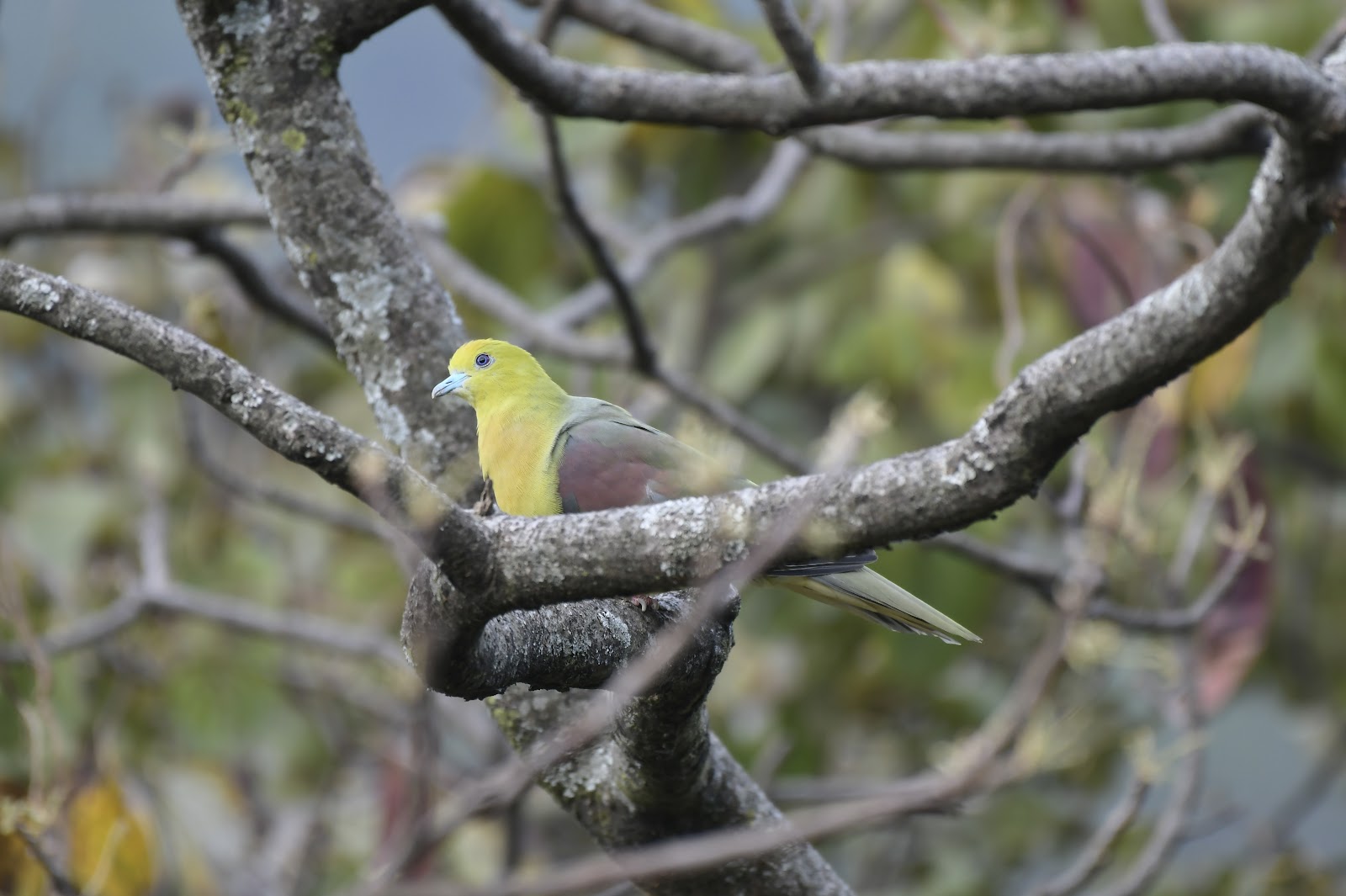

































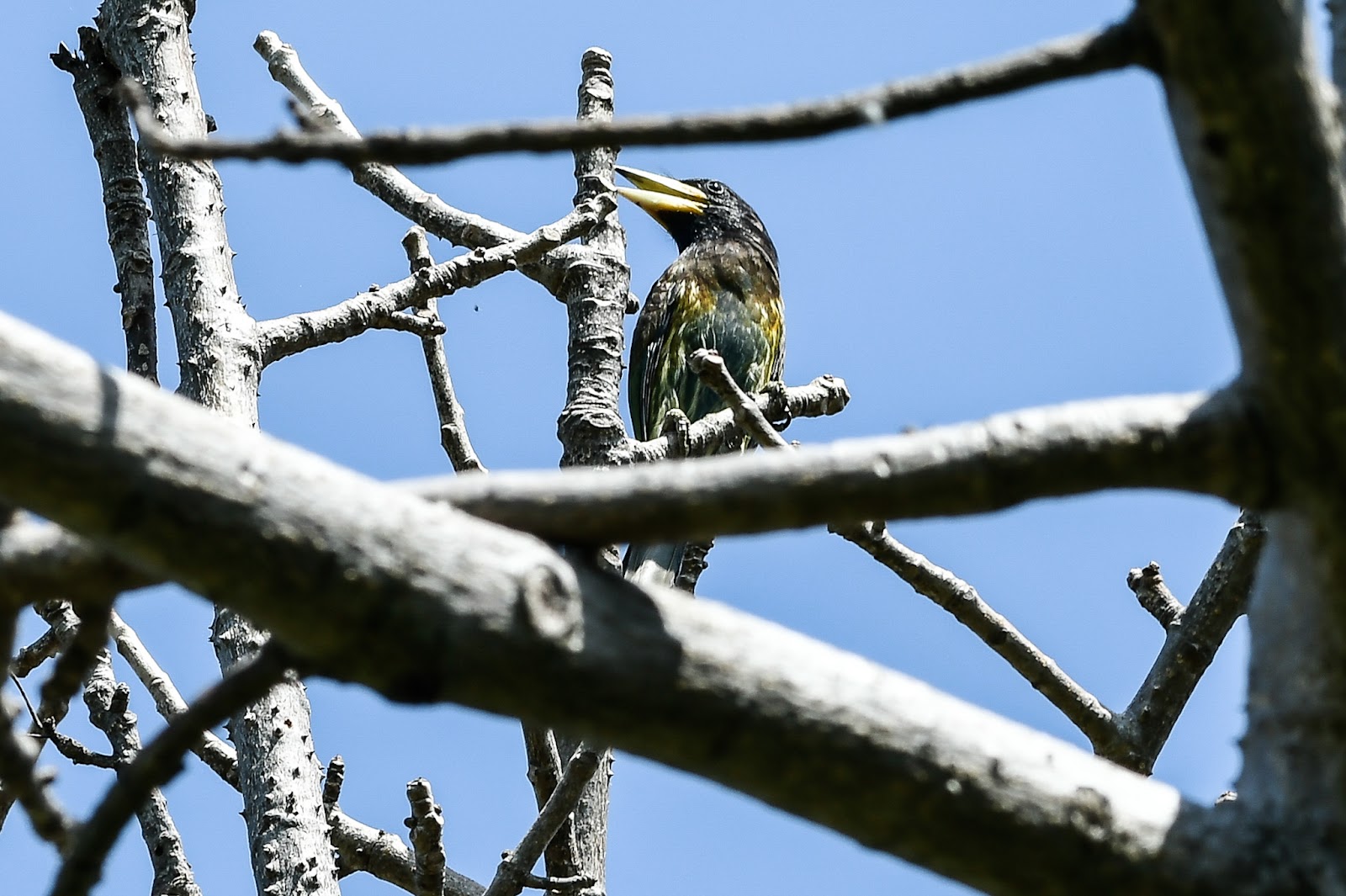
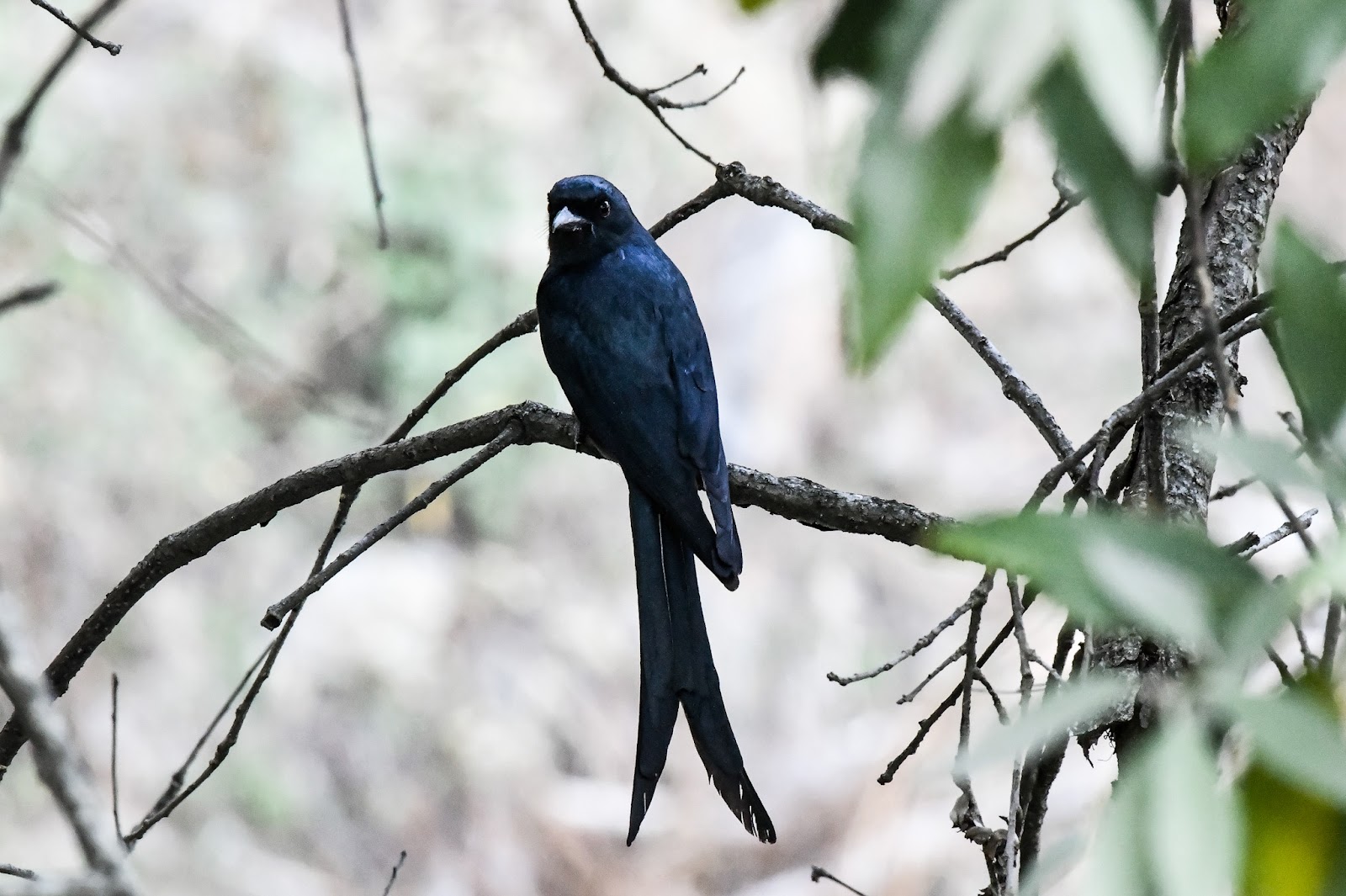



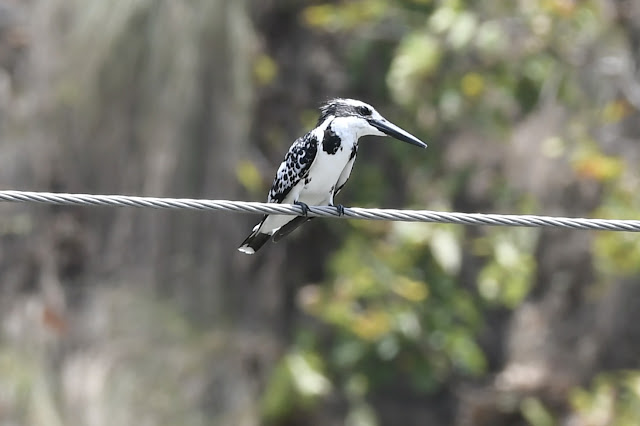
































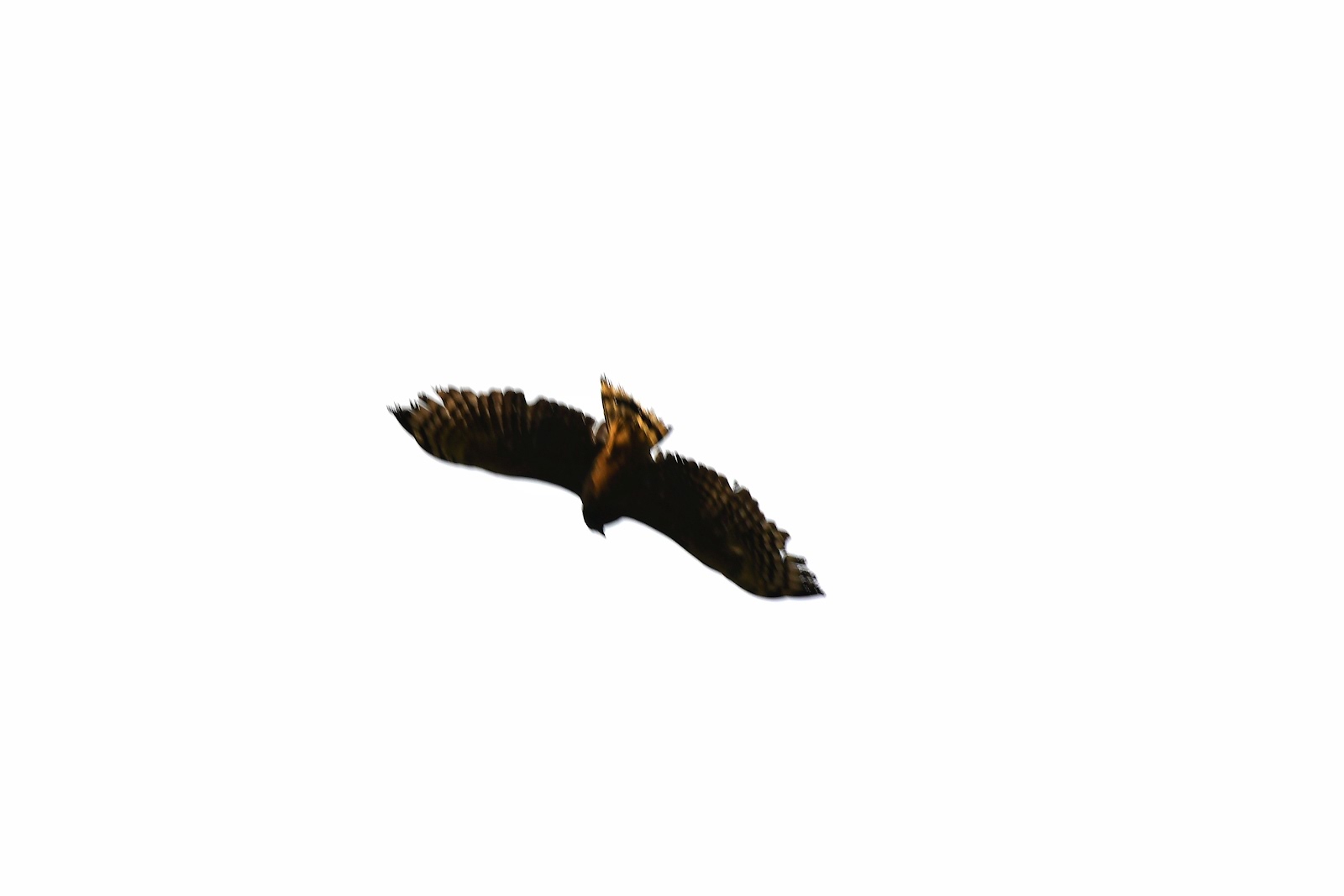
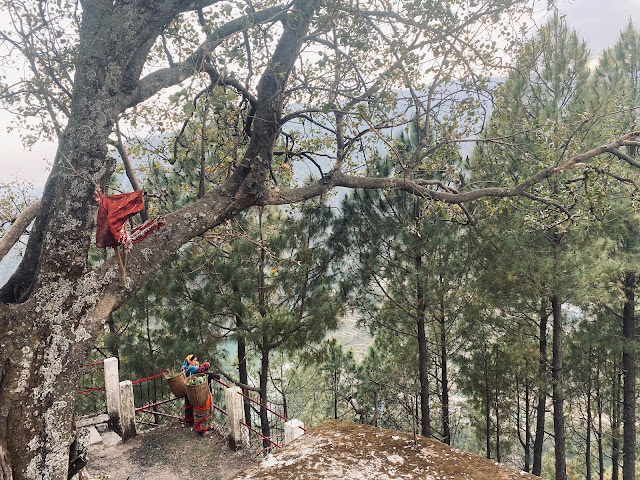



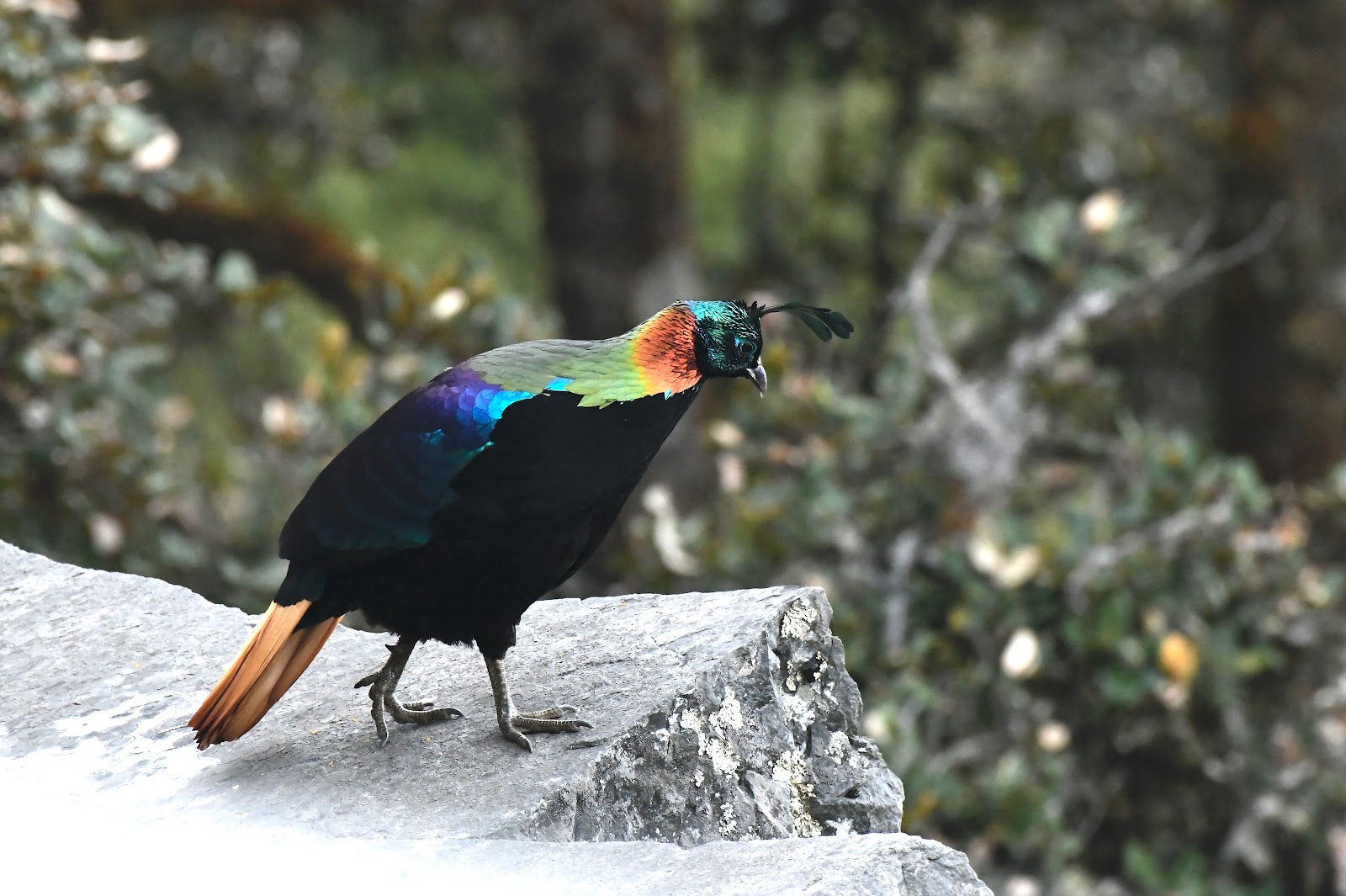







































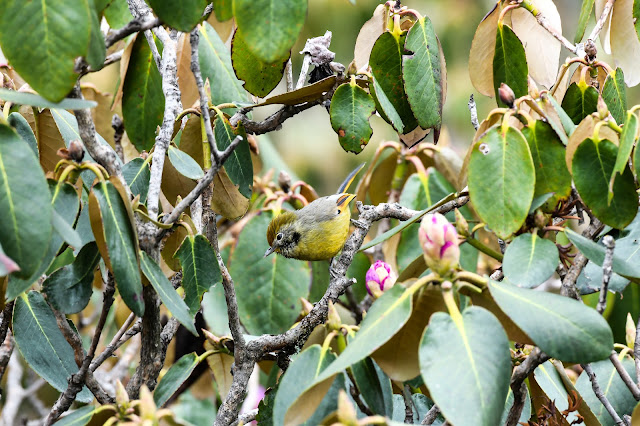












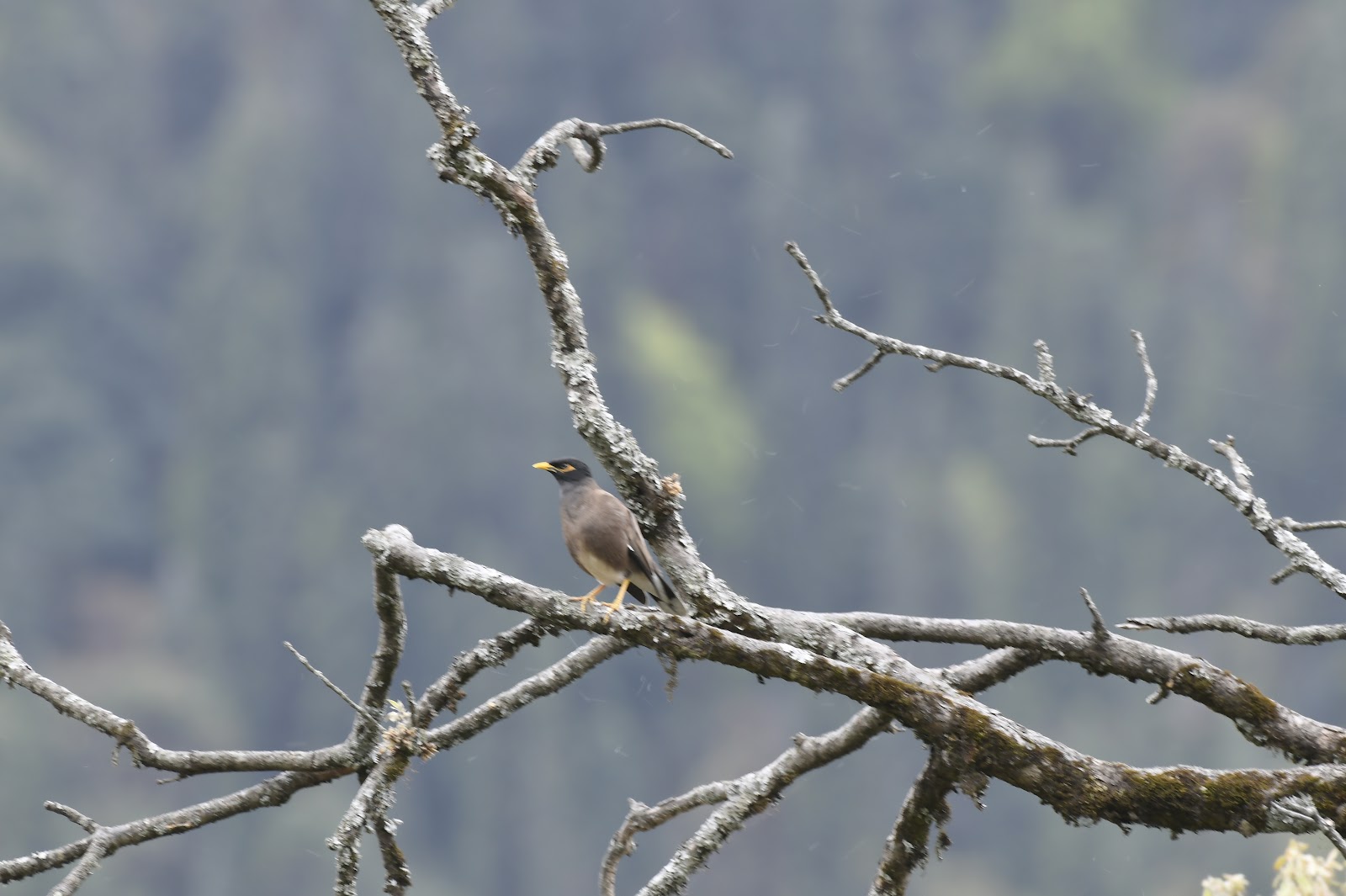
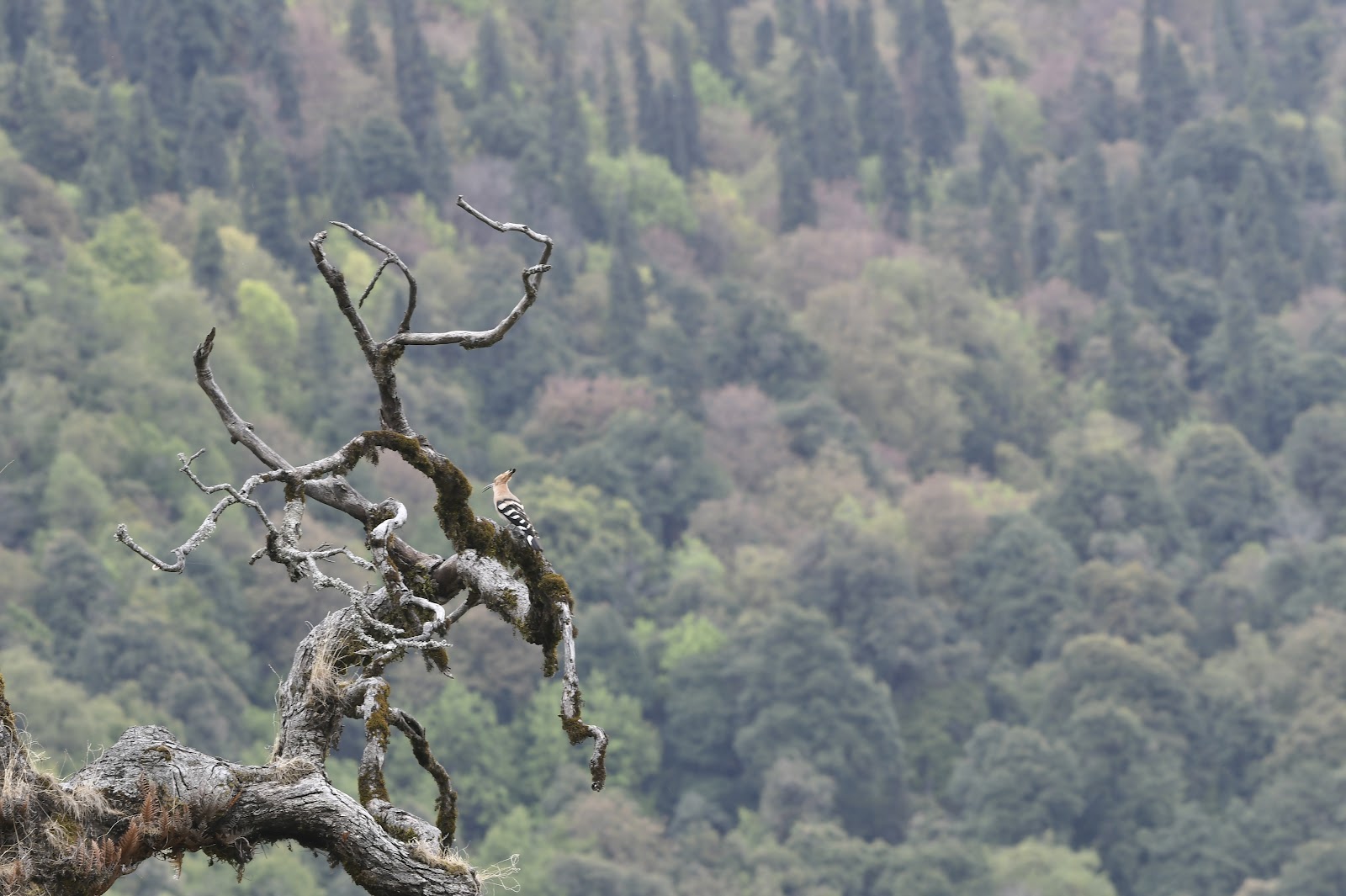

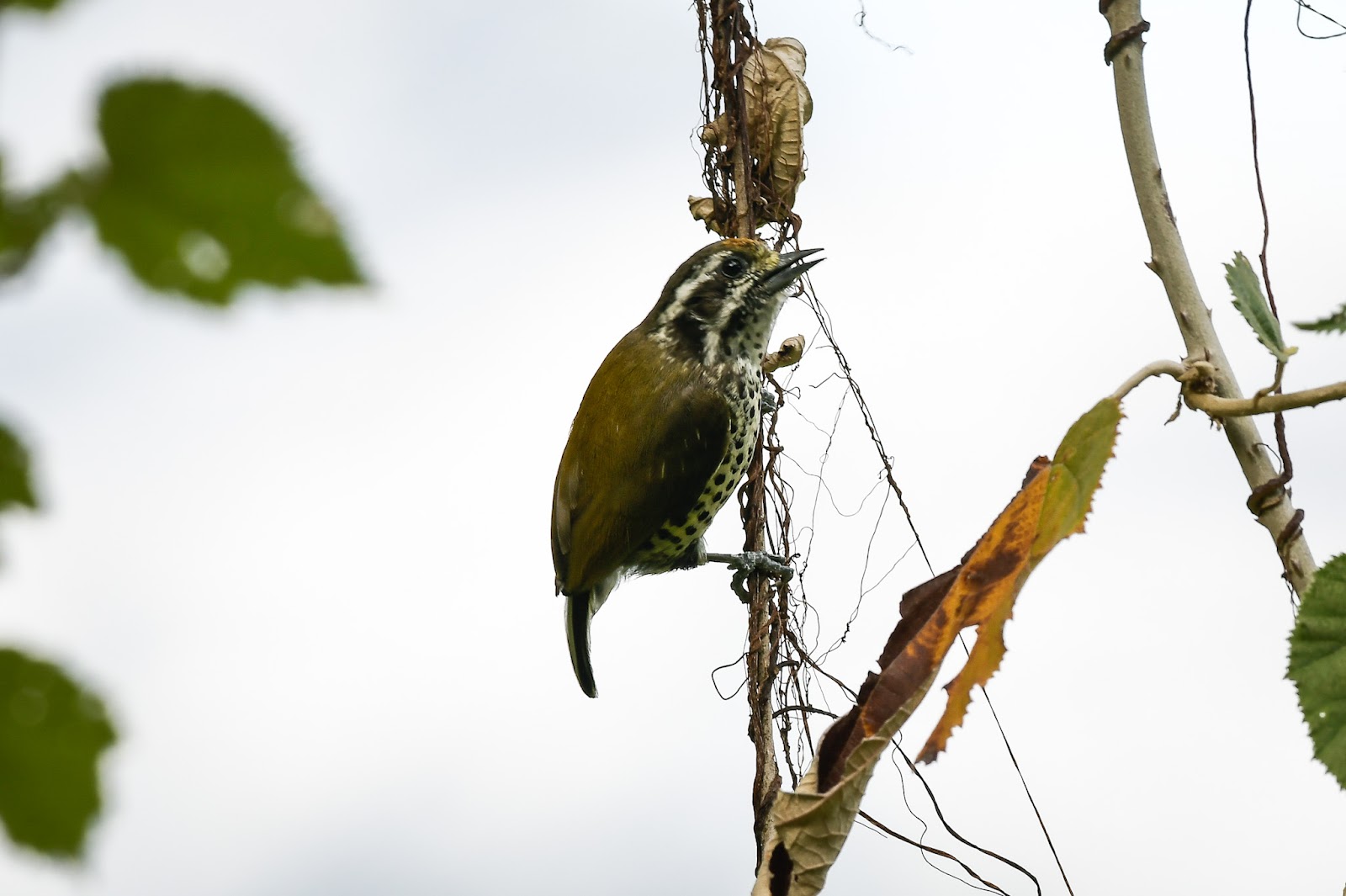

































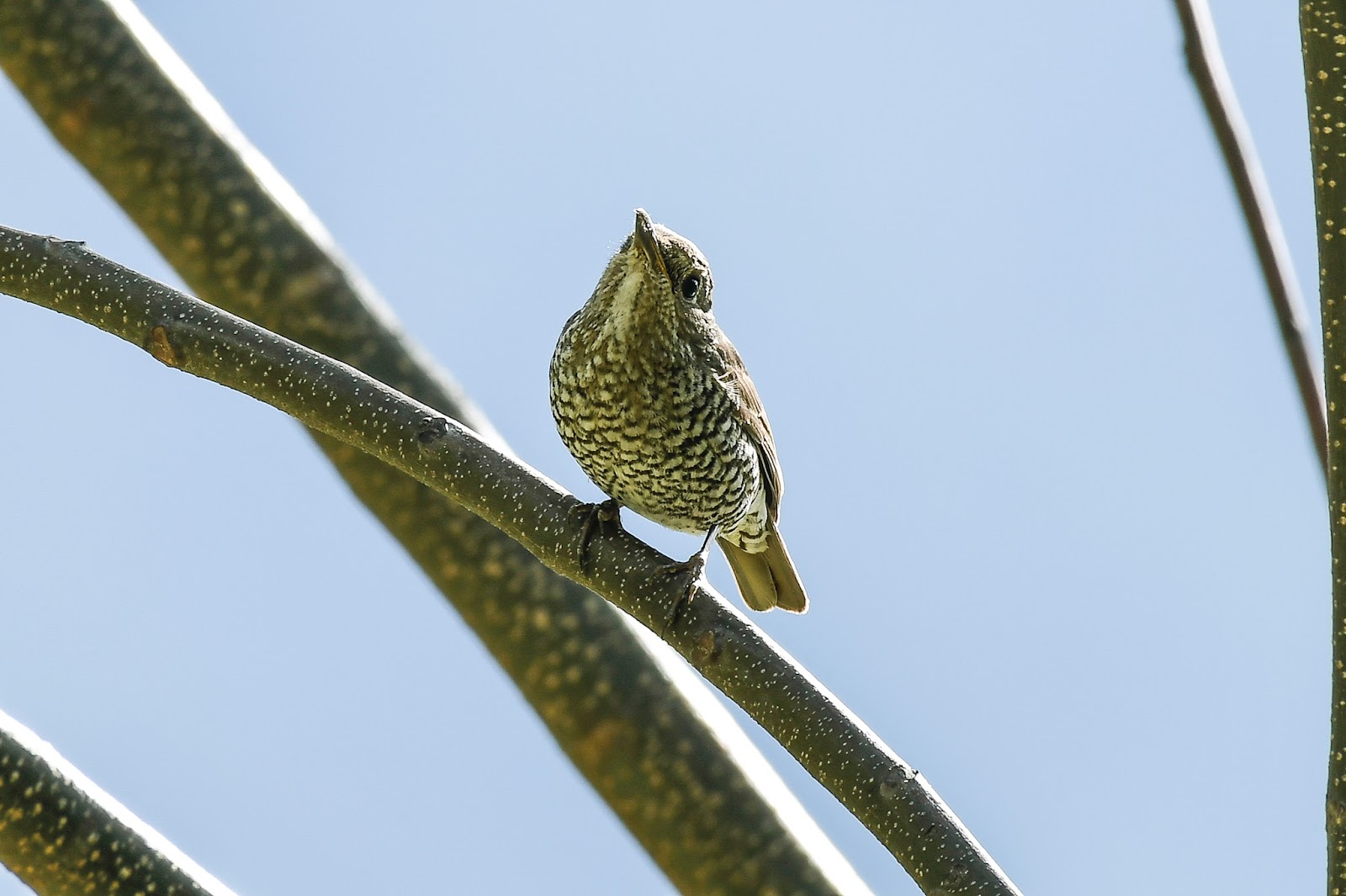

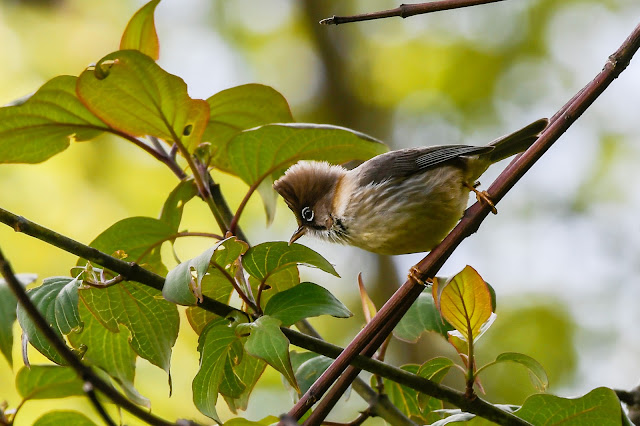












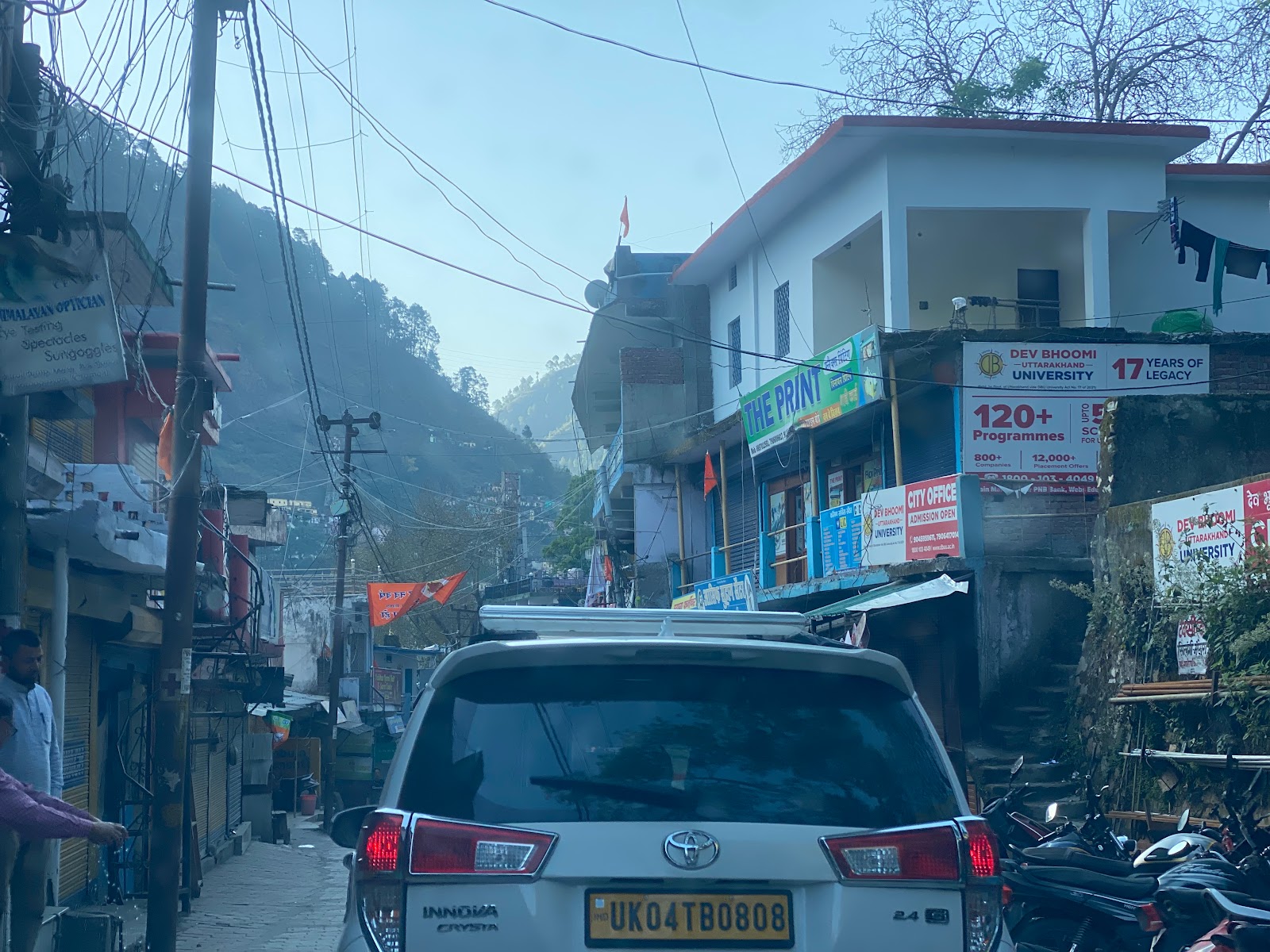







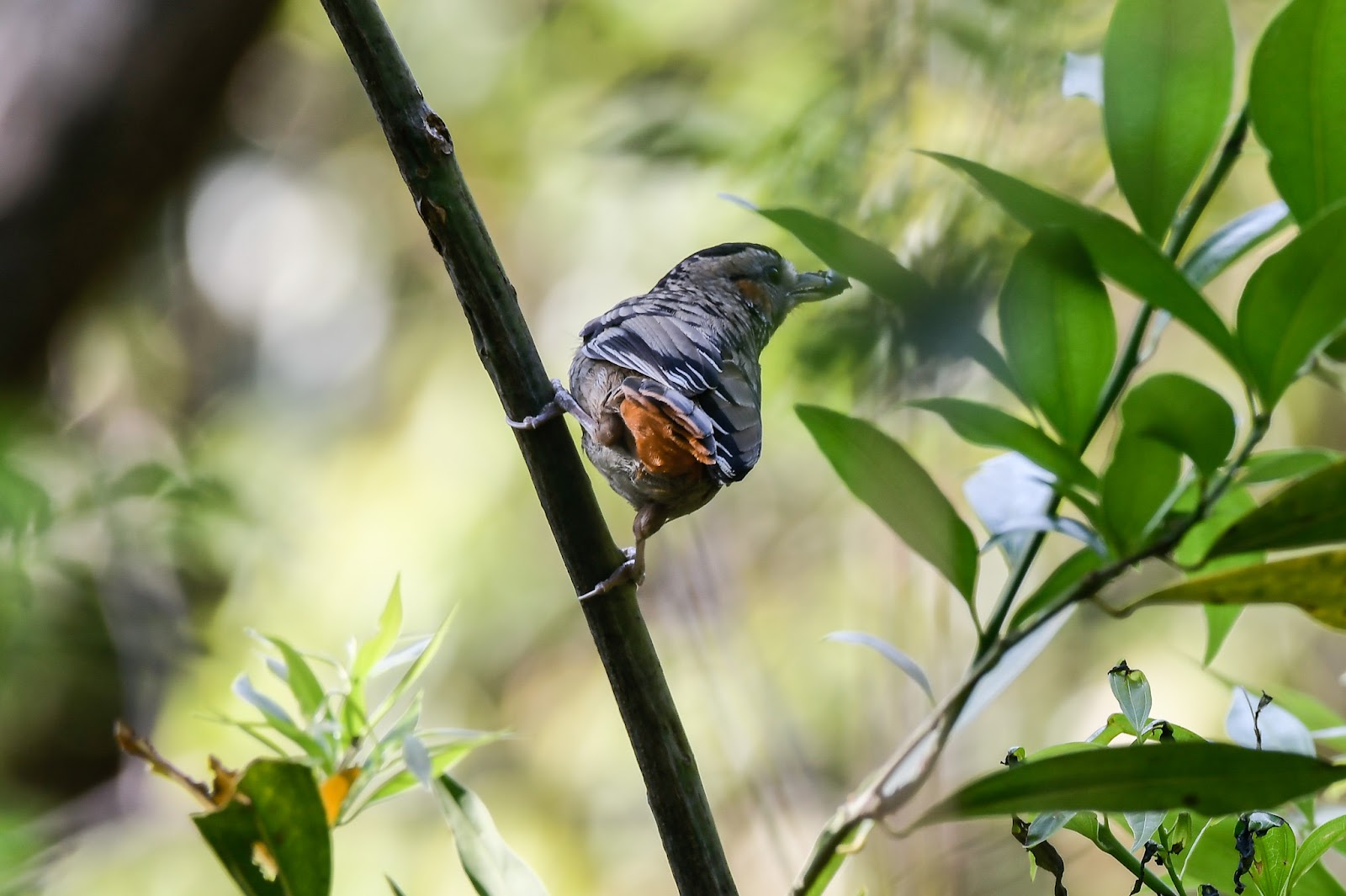






















ไม่มีความคิดเห็น:
แสดงความคิดเห็น